wfw weekend #371

–
Wrathful Diety (Rusty) (2016), STEFAN TCHEREPNIN
seen at Galerie Francesca Pia, Zürich
on Friday, January 6, 2017
image © we find wildness
–
➝ follow we find wildness on instagram for instant content
–

–
Wrathful Diety (Rusty) (2016), STEFAN TCHEREPNIN
seen at Galerie Francesca Pia, Zürich
on Friday, January 6, 2017
image © we find wildness
–
➝ follow we find wildness on instagram for instant content
–
all images courtesy the artist and Lyles & King, New York
–
Bad Color Book, a solo exhibition by FARLEY AGUILAR
on view at Lyles & King in New York
until February 12, 2017
–
chosen by curator and editor DOMENICO DE CHIRICO
–

–
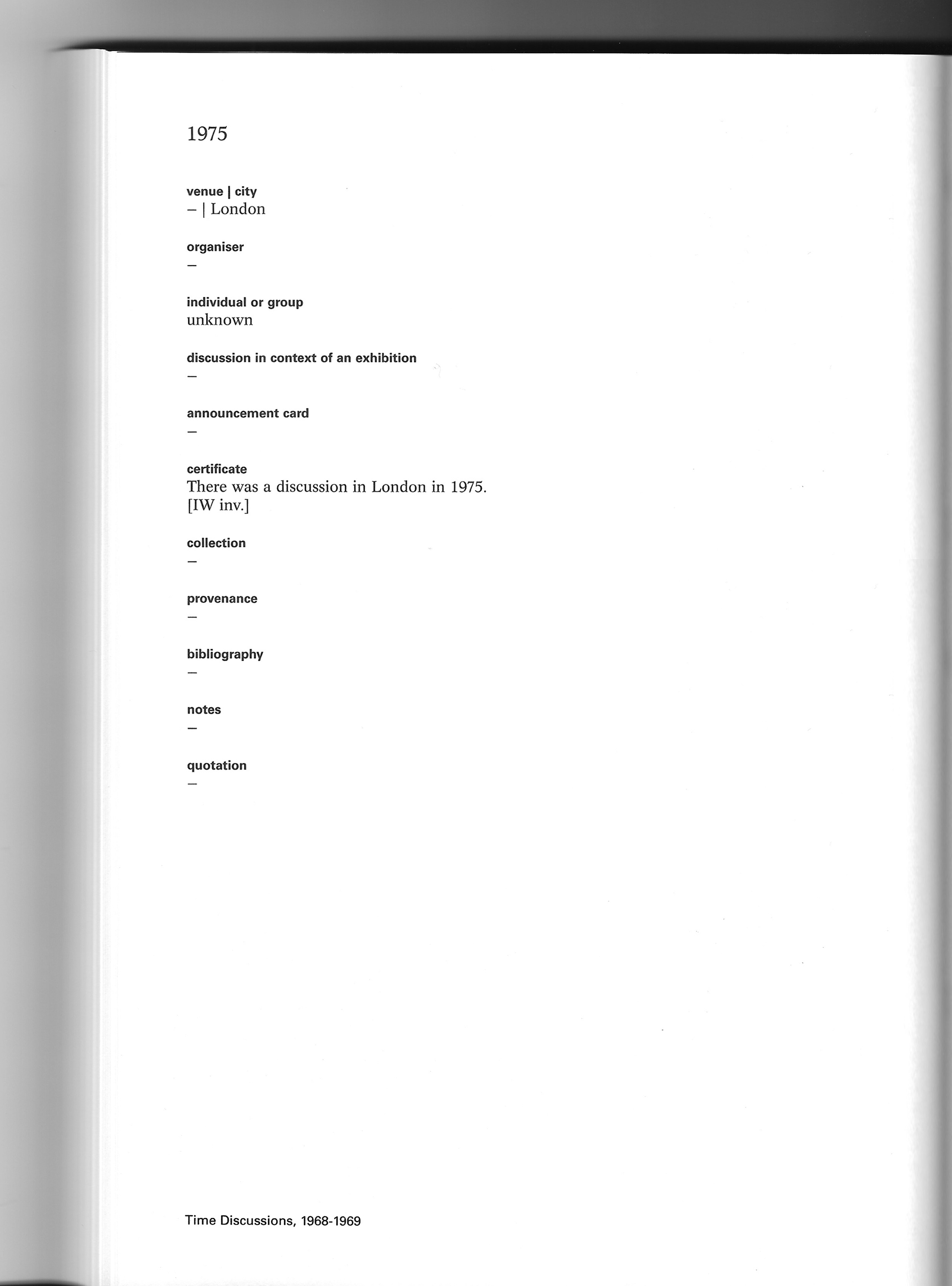
–
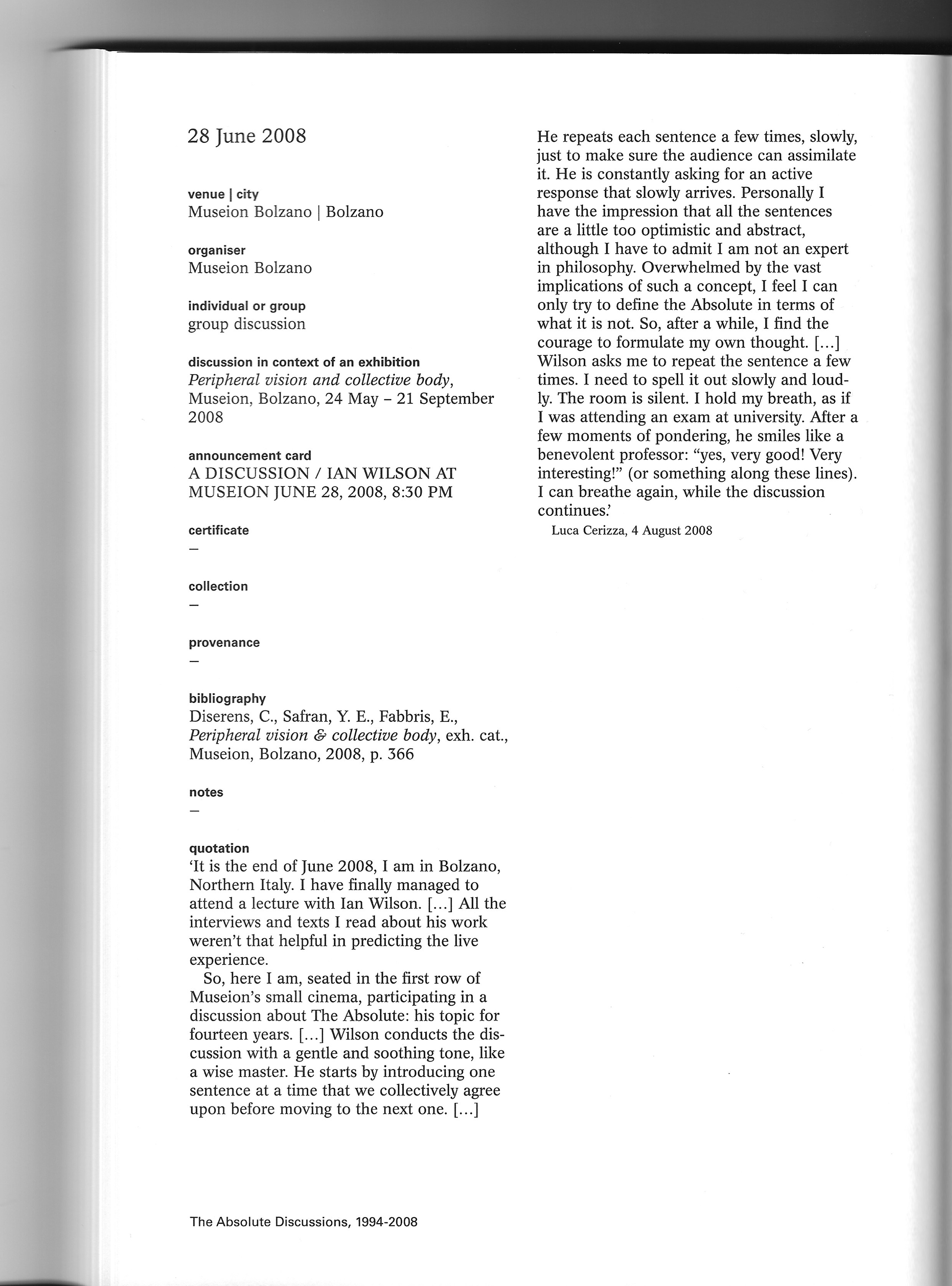
pages from IAN WILSON, The Discussions
published by the Van Abbemuseum, Eindhoven, in collaboration with Museu d’Art Contemporani de Barcelona (MACBA) and Musée d’art moderne et contemporain (Mamco), Geneva, with support by Jan Mot, Brussels, 2008
images courtesy we find wildness
–
After a few sculptural works and paintings in the early 60’s, IAN WILSON discovered that thinking and talking about his objects had as he said ‘ a greater abstraction’ than reproducing the works themselves. He then concentrated exclusively on his long-term project entitled The Discussions. The first Discussion took place in 1968 in LAWRENCE WEINER’s studio. Since then WILSON has conducted Discussions in galleries, museums, and homes internationally. Neither recorded nor transcribed, their only physical manifestation is a certificate signed by the artist marking the time, date and location of their happening and may be subsequently purchased by individuals or institutions.
I probably benefit more from the Discussions than the participants do, because I remember everything that is said, even if I do not answer immediately. If it is a good remark I cannot integrate it directly but after the Discussion I try to do that, often I’ll be doing that for months. The ideas I get from the audience have a great influence because the Discussions are a work in progress, I am very easily influenced by everyone who makes a critical comment that points out the weakness in the logical structure, or something else, it isn’t always a question of logic. It is a peculiar activity, I don’t quite understand it myself either. An artist wishes to communicate. You write and I am preoccupied with ‘speech’. I am interested in the shape of ideas as they are expressed, spontaneously, at the moment itself. By concentrating on spoken language as an art form I have become more distinctly aware that I as an artist am a part of the world. – IAN WILSON interviewed by OSCAR VAN DEN BOOGAARD, 2002
In 2006 the Van Abbemuseum in Eindhoven proposed to document IAN WILSON‘s work into a catalogue raisonné containing all of his discussions from 1968 until 2008. In the book, every discussion is documented separately providing factual informations as well as personal impressions of participants.
Please note that the KW Institute for Contemporary Art in Berlin will examine WILSON‘s practice through three corresponding solo presentations by HANNE LIPPARD, ADAM PENDLETON, and PAUL ELLIMAN. According to the press release his work ‘will be physically and conceptually embedded within each exhibition, serving as a framework for exploring roles of language and communication, and the broader significance of interaction between human beings. The exhibition is therefore in constant flux and changes gradually throughout the course of its duration‘.
IAN WILSON at KW Institute for Contemporary Art, Berlin is on view from January 20 to May 14, 2017.
–
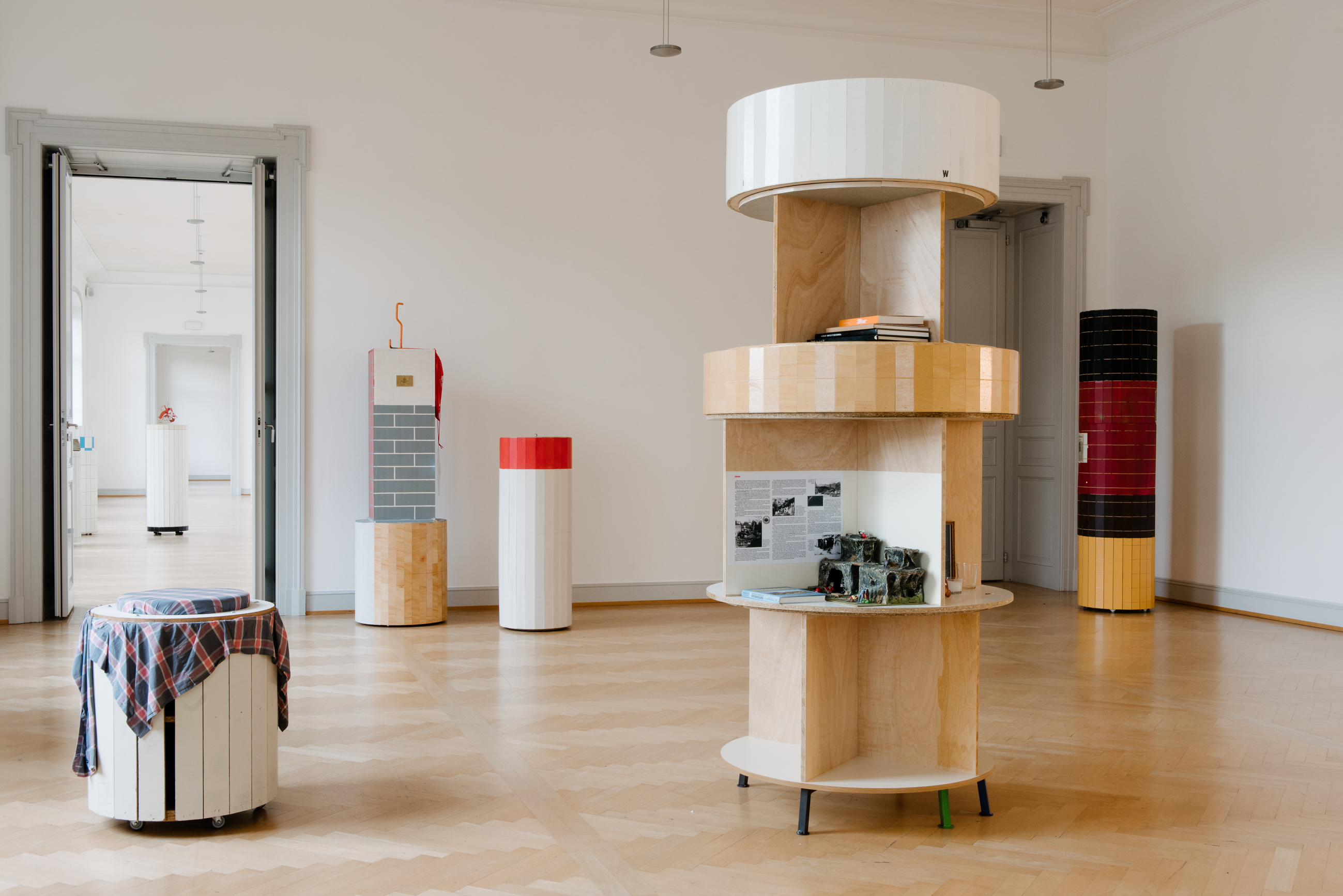
MANFRED PERNICE, 2B Dosenwelt
installation view at Kunstmuseum St.Gallen
image courtesy of the artist and Kunstmuseum St.Gallen, photo: SEBASTIAN STADLER
–
MANFRED PERNICE is best known for his cans (dosen) pieces which consist of cylindrical sculptures made out of low-budget materials such as plywood, laminated fiberboard or cardboard. These works are very often set on wheels and are temporarily assembled together into ‘can fields’ for exhibitions. PERNICE is always loading these cans or containers with historical, social, but also personal references.
When I began making the cans, I didn’t have a precise idea of where they would go. The cans seemed banal, but now I’m happy to have them. In my work, making cans is an attempt to create a kind of order, even in a nonsensical way. The can is a working process, a tool or method for dividing up elements into separate parts that can subsequently be brought together in different ways. Some cans are numbered, and these numbers reappear on the walls beside photographs and texts that I have collected, establishing certain relationships with history. When I place the cans together in a given room, it’s like creating a chemical reaction that will affect the various elements in unknown ways. I’m curious to see how the cans will work in a particular space—and that goes for the contents of each can as well as how they relate to one another. Since the cans are movable and can be linked to any set of found documents, they offer many possibilities for seeing how events react upon one another. – MANFRED PERNICE in conversation with JENNIFER ALLEN, Artforum
2B Dosenwelt by MANFRED PERNICE is on view at Kunstmuseum St.Gallen until February 19, 2017.
–

KOENRAAD DEDOBBELEER & RITA MCBRIDE, Hall
exhibition view at Kunsthalle Bern, October-November 2008
–

KOENRAAD DEDOBBELEER & RITA MCBRIDE, Hall
exhibition view at Kunsthalle Bern, October-November 2008
–

KOENRAAD DEDOBBELEER & RITA MCBRIDE, Hall
exhibition view at Kunsthalle Bern, October-November 2008
–

KOENRAAD DEDOBBELEER & RITA MCBRIDE, Hall
exhibition view at Kunsthalle Bern, October-November 2008
–
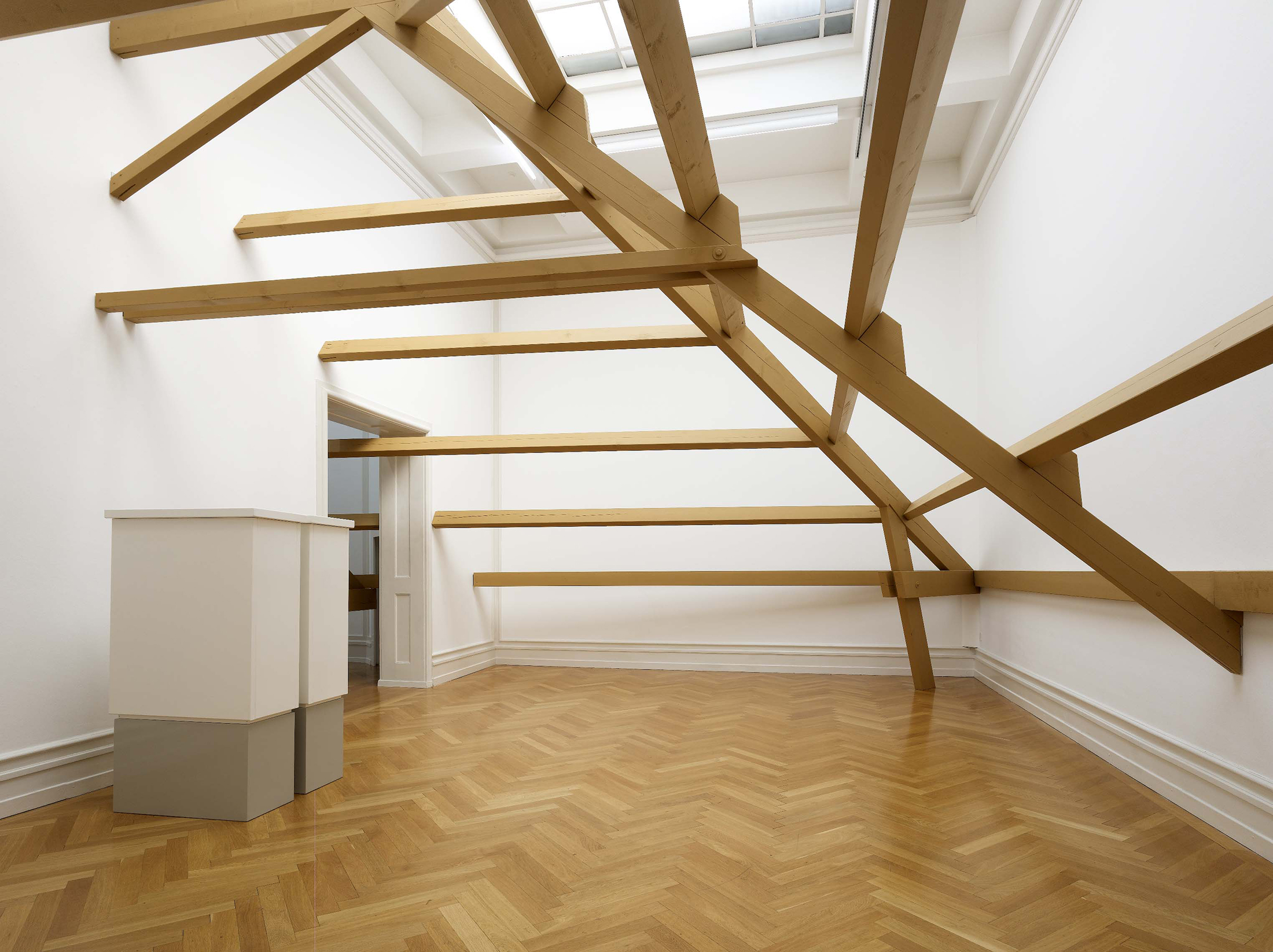
KOENRAAD DEDOBBELEER & RITA MCBRIDE, Hall
exhibition view at Kunsthalle Bern, October-November 2008
all images courtesy Kunsthalle Bern
–
Under the direction of PHILIPPE PIROTTE MUT, the Kunsthalle Bern hosted in the end of 2008 an exhibition by American artist RITA MCBRIDE and Belgian artist KOENRAAD DEDOBBELEER.
This exhibition knew its first instalment earlier in 2008 at the Frac Bourgogne in Dijon for which curator EVA GONZALEZ-SANCHO invited the artists to collaborate. The show then travelled to the Kunsthalle in Bern, where it was presented under the title Hall.
RITA MCBRIDE & KOENRAAD DEDOBBELEER took over the first floor of the Kunsthalle with two large works that included the reproduction of service station called a ‘roof shelter’ based on MCBRIDE‘s photographs, as well as a wooden frame of the attic of a residential block in which DEDOBBELEER was living. These two works were concentrated into two rooms from the five available on the first floor and thus leaving the exhibition space empty. The visitors were entering the installation which was looking like a film set or a stage as members of the public and as actor at the same time.
Hall by RITA MCBRIDE & KOENRAAD DEDOBBELEER was on view at Kunsthalle Bern from October 4 to November 30, 2008. Please note that DEDOBBELEER will be on view at Mai 36 Galerie in Zürich from January 12 to March 4, 2017.
–
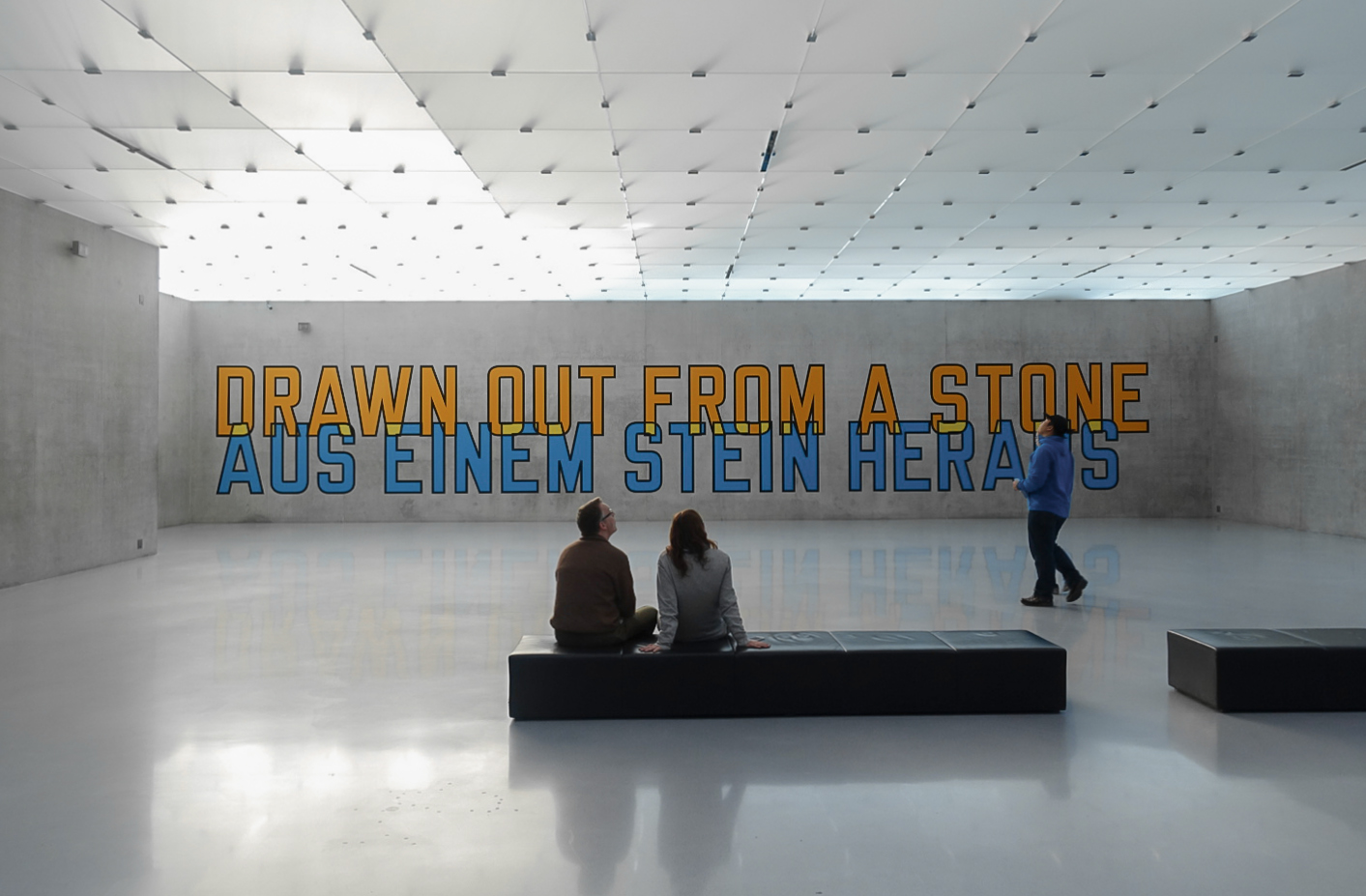
–
WHEREWITHAL | WAS ES BRAUCHT exhibition view , LAWRENCE WEINER
seen at Kunsthaus Bregenz, Austria
on Thursday, December 29, 2016
image © we find wildness
–
➝ follow we find wildness on instagram for instant content
–
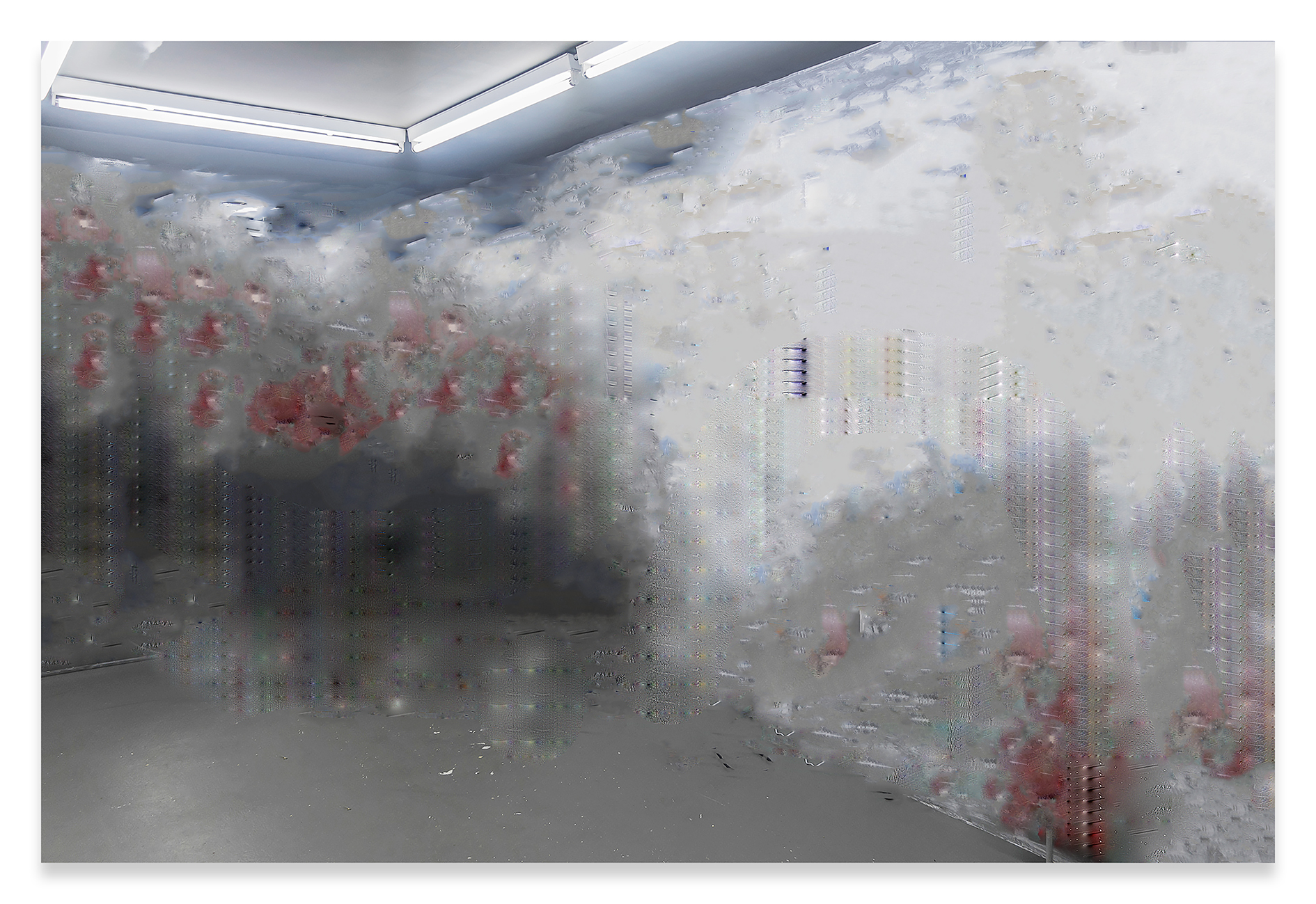
–
Aware: after Freeports (2016), AGATHA VALKYRIE ICE (DOROTA GAWEDA, EGLÉ KULBOKAITÉ)
presented at Salts, Basel
shot on December 10, 2016, altered on January 5, 2017 by DAVID HANES*
image courtesy of the artist and we find wildness
–
*DAVID HANES lives and works in Berlin. Read more about this special project for we find wildness here.
–
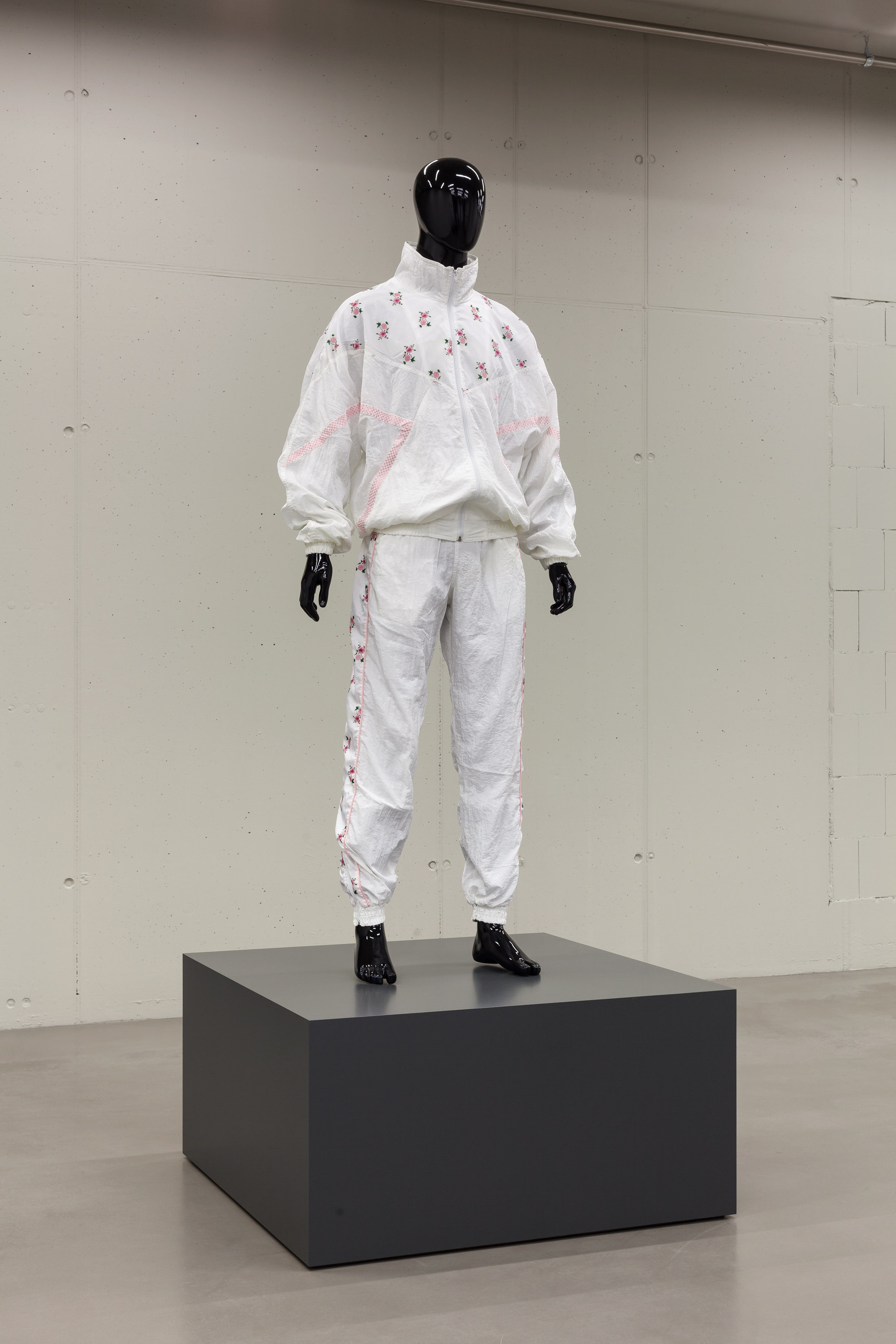
Fong Leng Sportswear, ca. 1985-1995
installation view MMK Museum für Moderne Kunst Frankfurt am Main, 2016
Courtesy of the artist, photo: AXEL SCHNEIDER
–
The image above features a tracksuit currently shown at MMK Frankfurt in the solo exhibition of WILLEM DE ROOIJ. The piece of outfit has been actually produced in the eighties by a Sino-Dutch designer called FONG-LENG. Since more than ten years, DE ROOIJ is collecting FONG-LENG’ sportswear which are presented in the exhibition in several groups of one, two, or three mannequins onto pedestals.
FONG-LENG was best known in the Netherlands for creating couture objects for exclusive clients. From the mid-’80s to the mid-’90s, she started to collaborate with large labels and thus to open her brand to a wider audience. Her work inevitably shifted to ‘something made for the few’ to ‘something made for the many’. DE ROOIJ is not only interested into this transition of audience which had effects on FONG-LENG’s artistic outputs but also into abstract ideas of different cultures such african printing techniques, navajo formal elements or chinese inspired embroideries (cf image above) that those clothes are carrying.
WILLEM DE ROOIJ is sharing his fascination for these garments without layers of mediation, not trying to claim ownership other than putting them into a different context.
Entitled by WILLEM DE ROOIJ is on view at MMK, Frankfurt am Main until January 8, 2017.
–

–
In the beginning of November 2016 the website Artspace published a text by AJAY KURIAN in which the American artist was reflecting about the work of another American artist specifically JORDAN WOLFSON. The text is based on WOLFSON‘s piece Colored Sculpture (2016) which consists of a cartoonish animatronic of a redheaded boy dangling over the ground, suspended from thick chains that snaked across the floor.
Colored Sculpture (2016) is on view at Stedelijk in Amsterdam until January 29, 2017. Make sure to read KURIAN‘s text in full via ArtSpace.
–
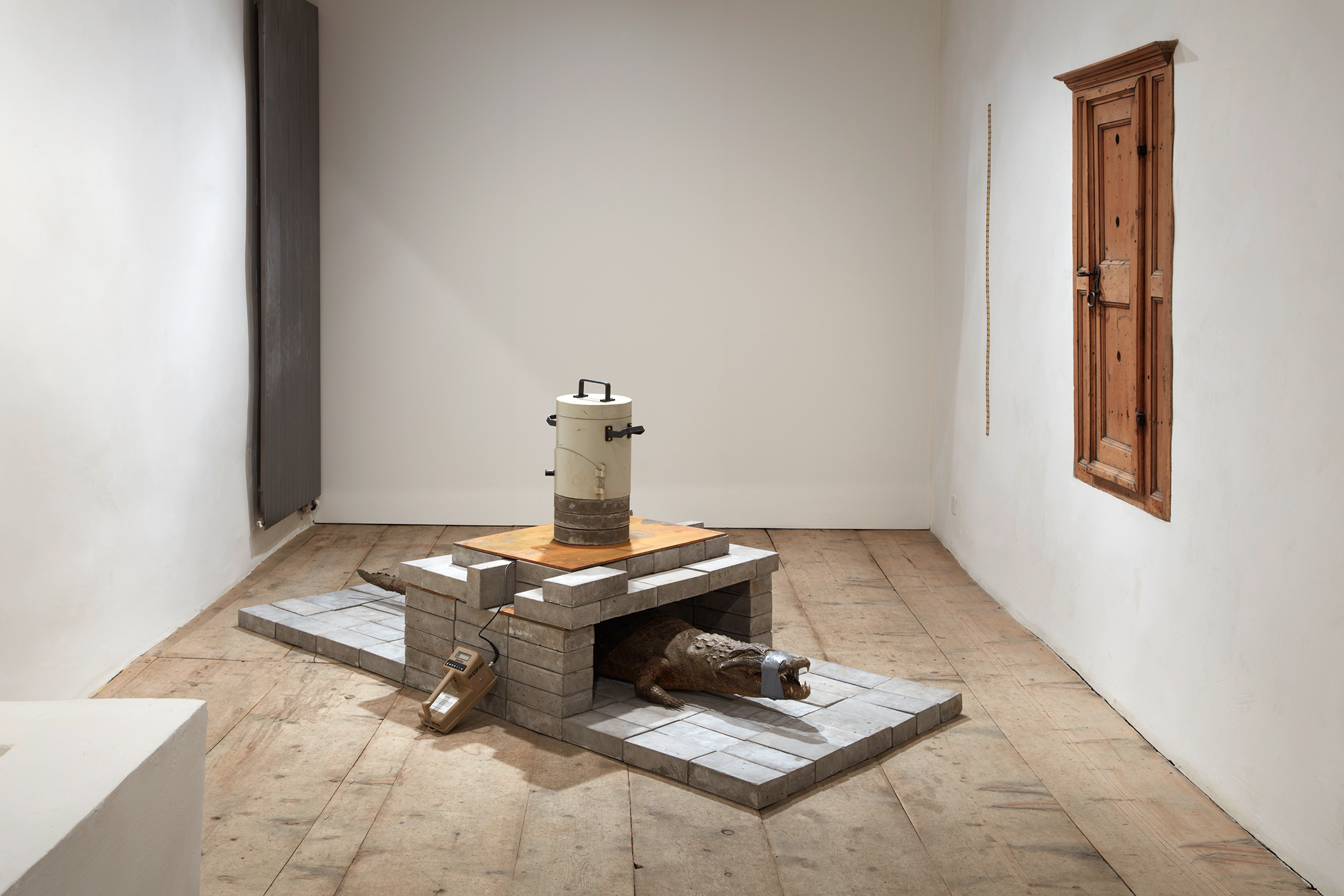
Savannah Shed, 2016
concrete, detector shield, scintillation pectometer, crocodile, tape
installation view at Galerie Tschudi, Zuoz, 2016/2017
–
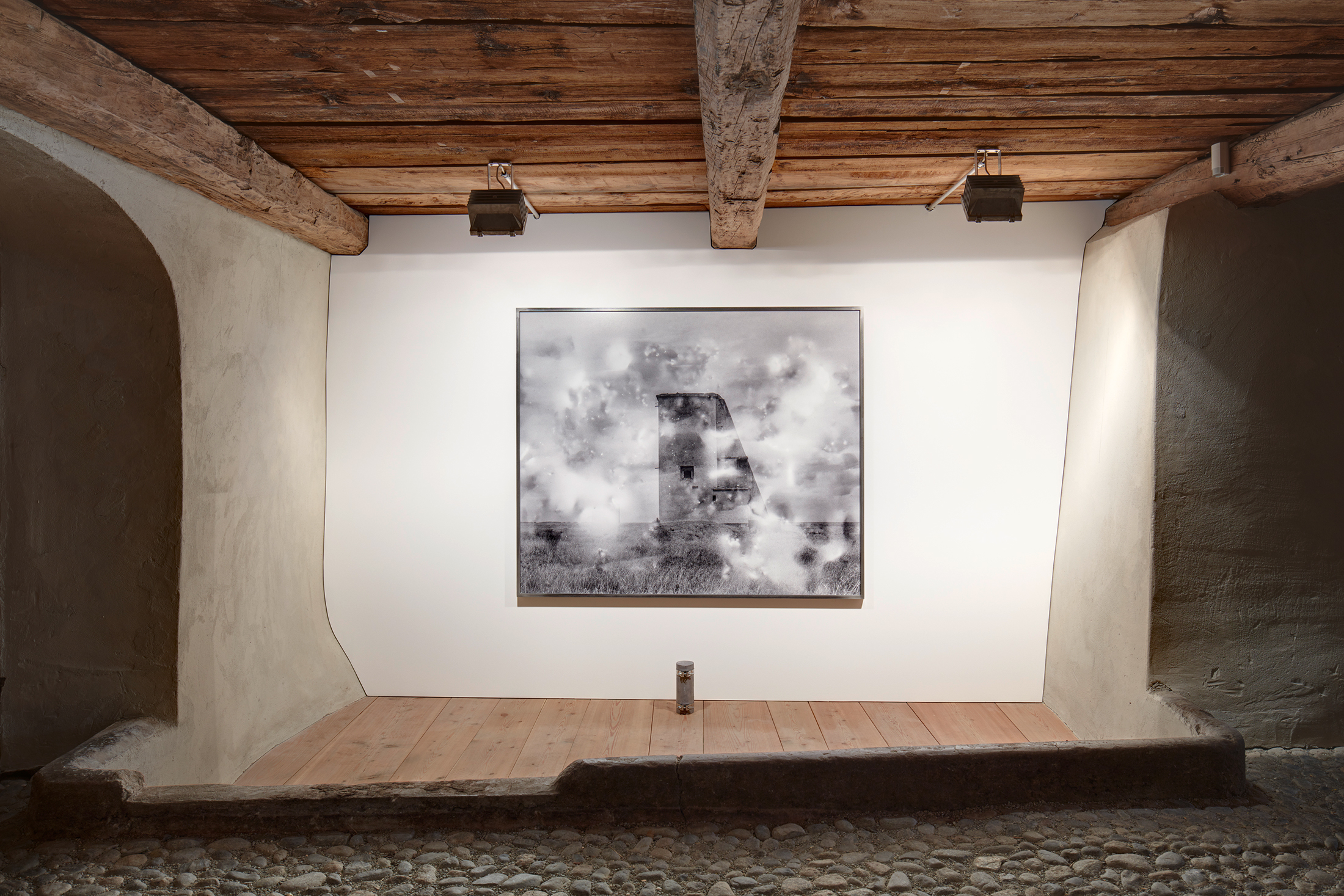
Polygon XVIII, 2014
black and white double exposure medium format film on baryta paper, steel frame, lead, glass, thermonuclear strata, negative, 150 x 180 cm
unique (the owner of the work get the negatif and some stones from the site in a lead tube)
–
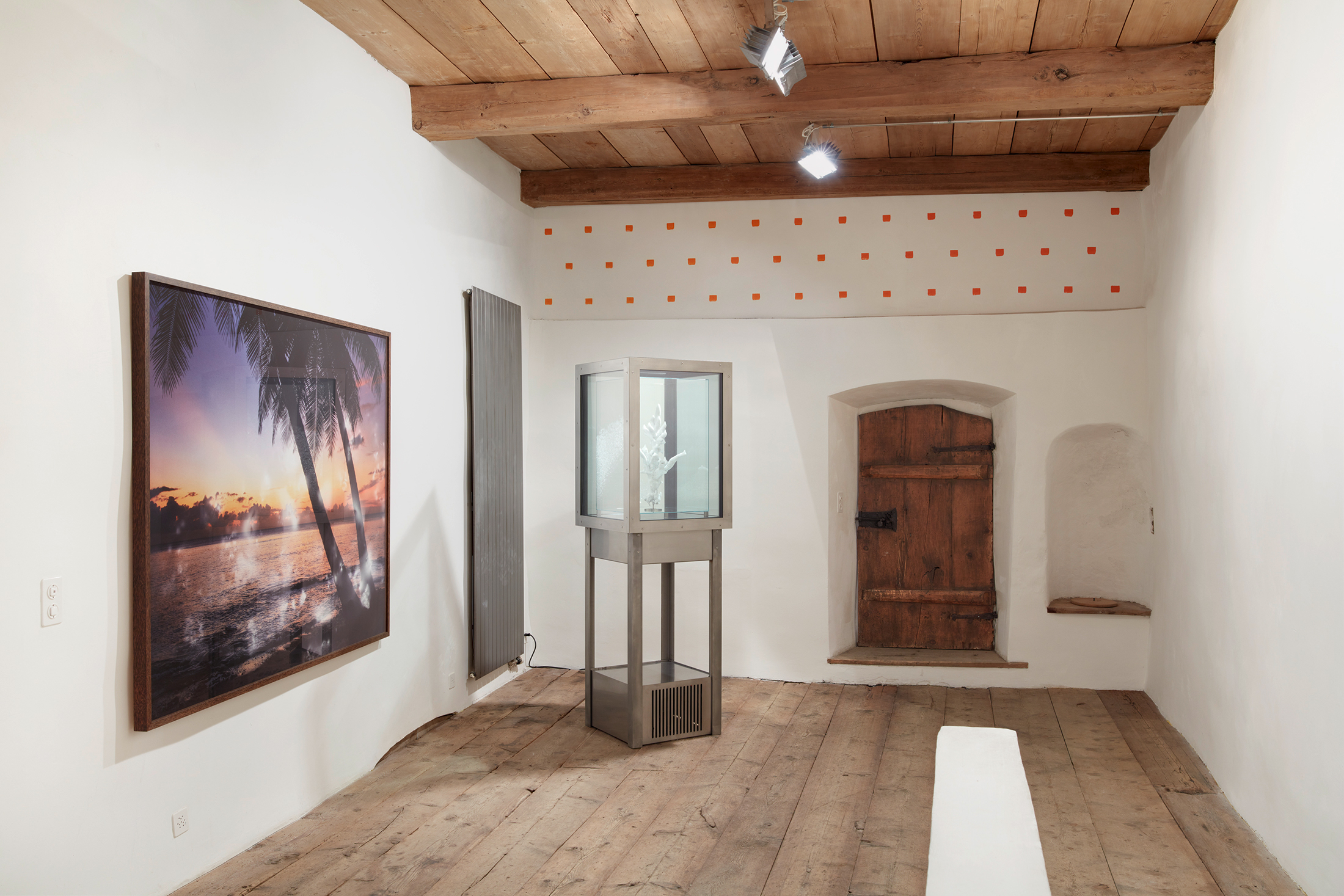
JULIAN CHARRIÈRE, First Light
installation view at Galerie Tschudi, Zuoz, 2016/2017
–

Tropisme, 2015
frozen plant, refrigerated showcase, 208 x 66 x 66 cm
–
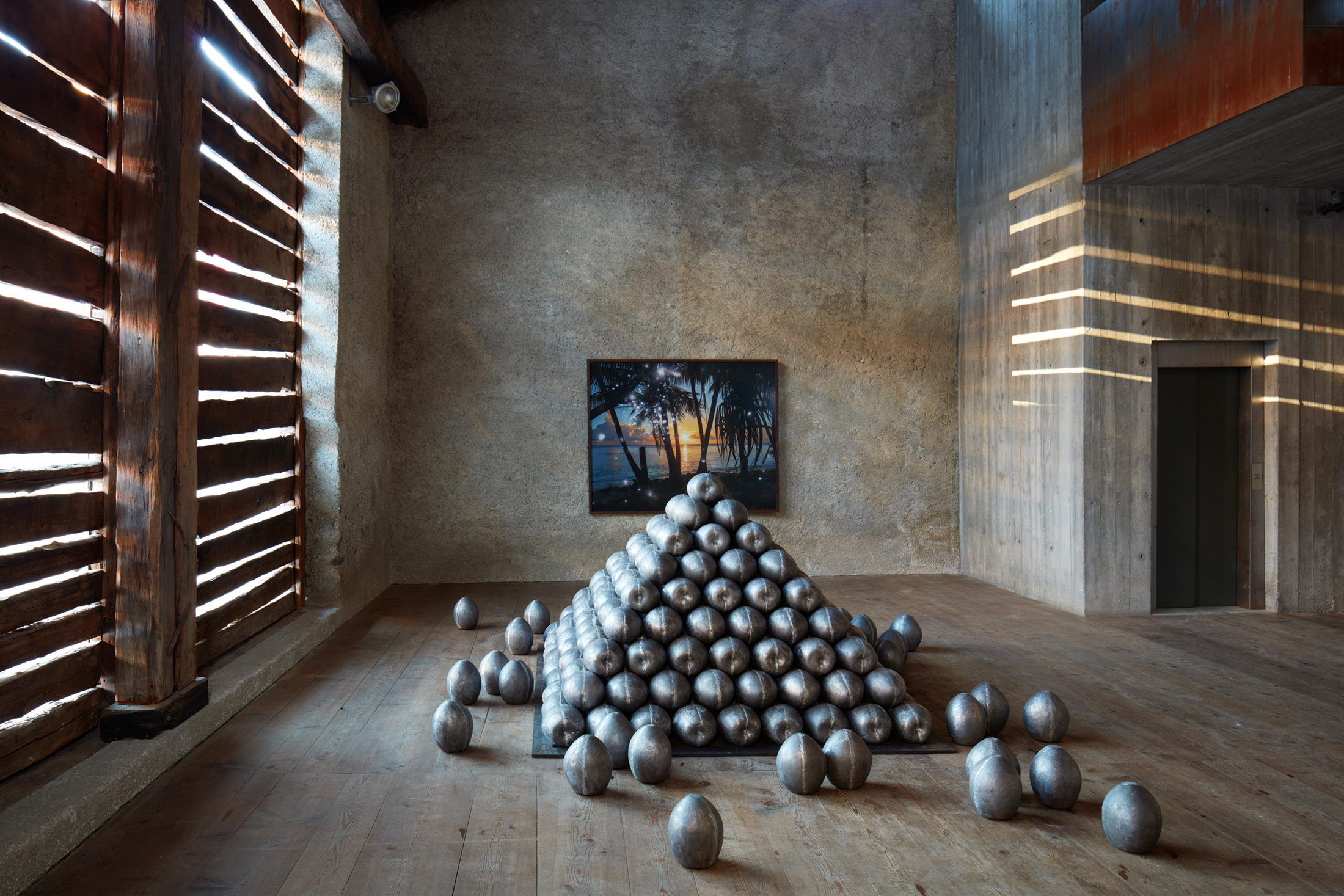
Pacific Fiction – Study for Monument, 2016
coconut Sarcophagi, 128 cm high in a steel frame of 227 x 203 cm, overall size: 330 x 440 cm
unique (Model for Monument for Marshall Island)
–
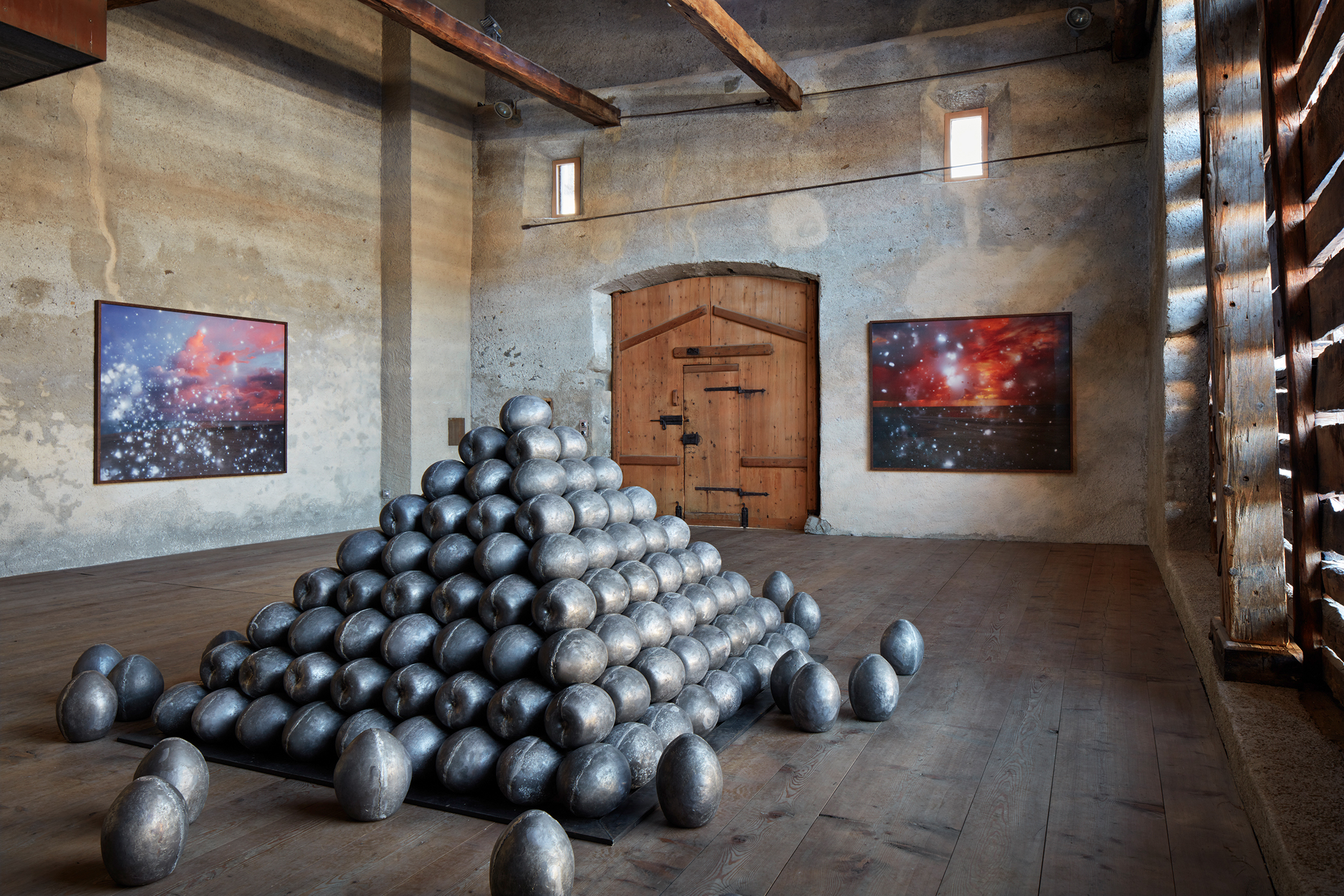
JULIAN CHARRIÈRE, First Light
installation view at Galerie Tschudi, Zuoz, 2016/2017
–
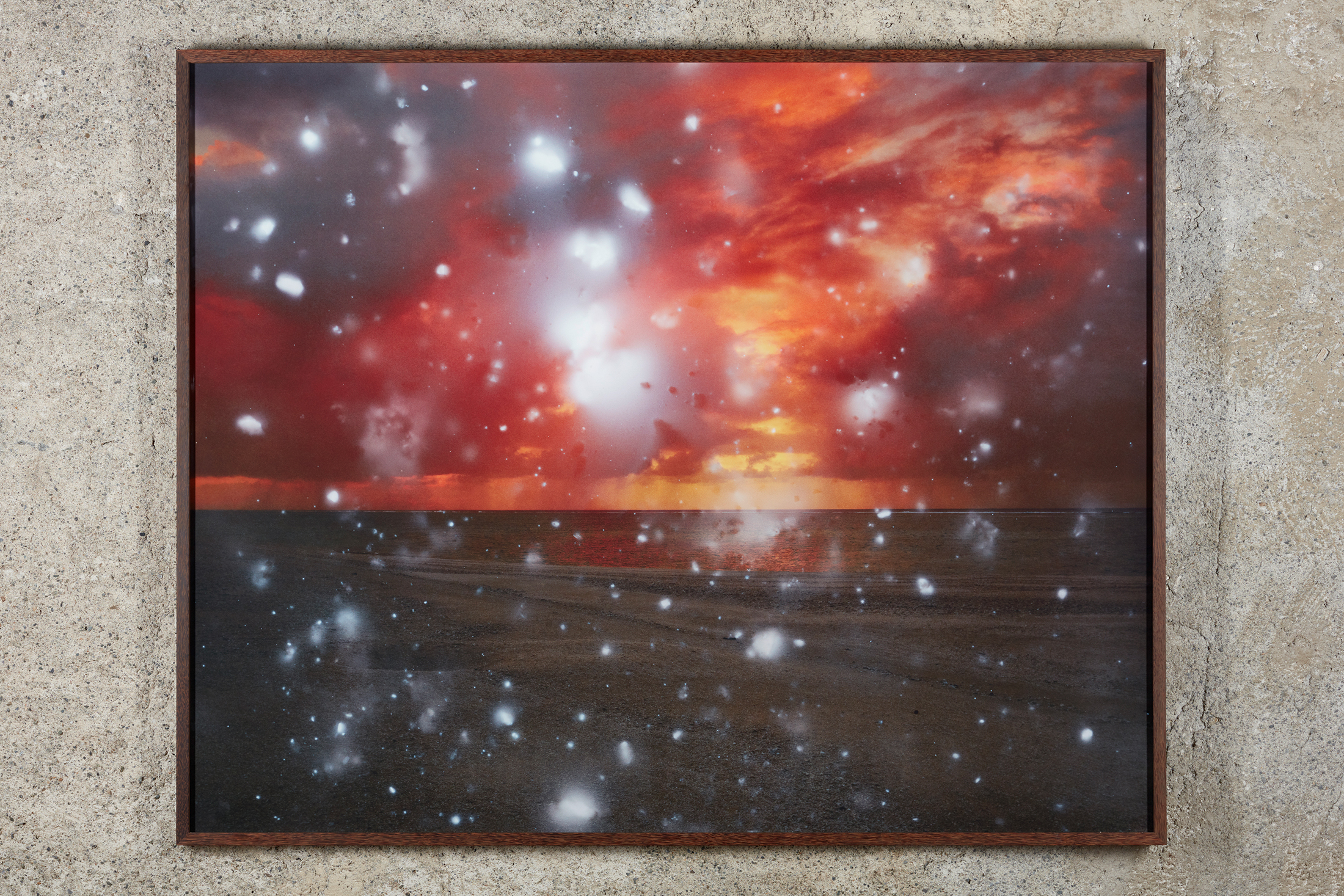
Bravo – First Light, 2016
archival pigment print on Hahnemühle Photo Rag, mounted on aluminium Dibond, red Palmira veneered frame, Mirogard anti-reflective glass, 153.8 x 191.3 cm (framed), unique
–

Able – First Light, 2016
archival pigment print on Hahnemühle Photo Rag, mounted on aluminium Dibond, red Palmira veneered frame, Mirogard anti-reflective glass, 153.8 x 191.3 cm (framed)
–
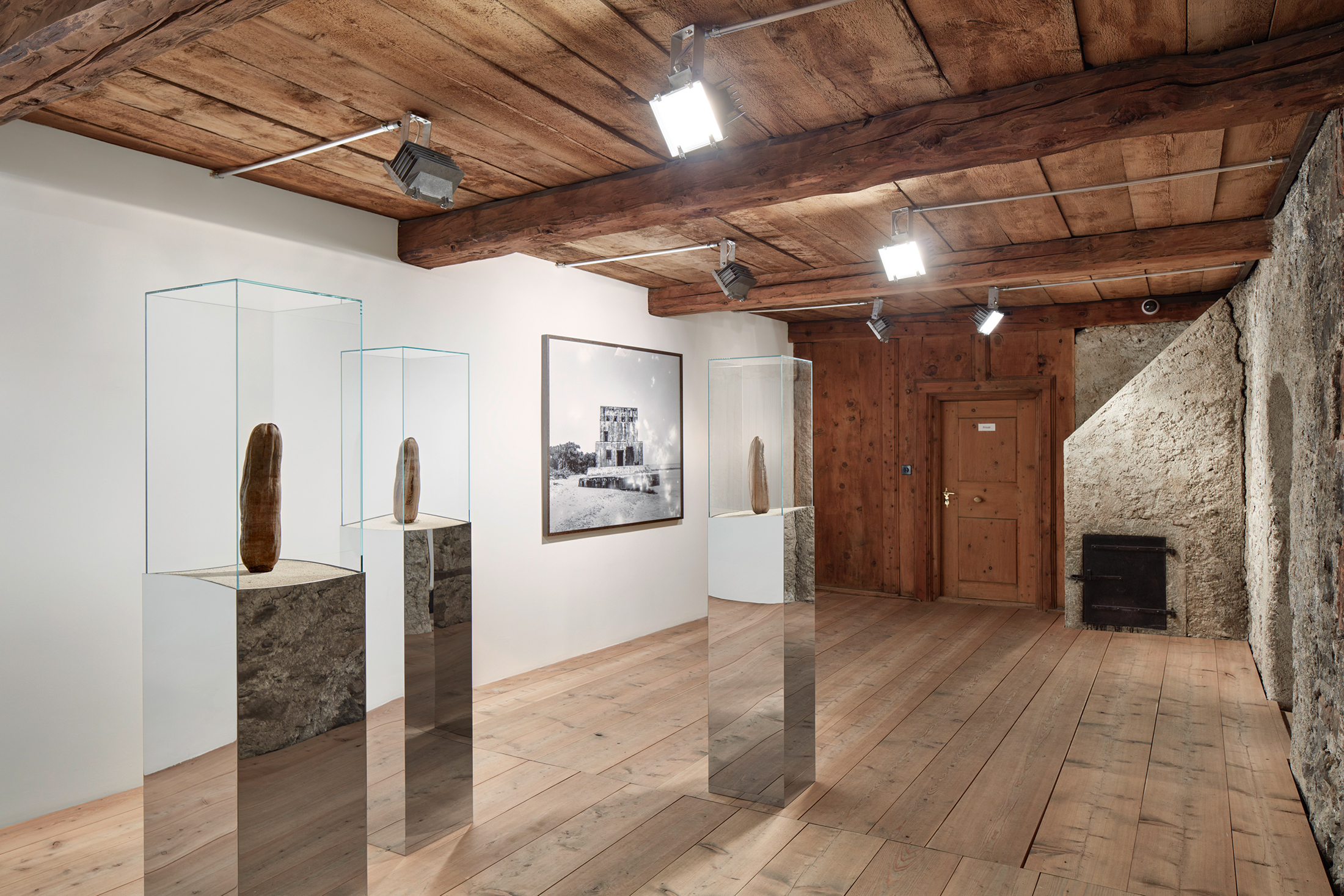
JULIAN CHARRIÈRE, First Light
installation view at Galerie Tschudi, Zuoz, 2016/2017
–
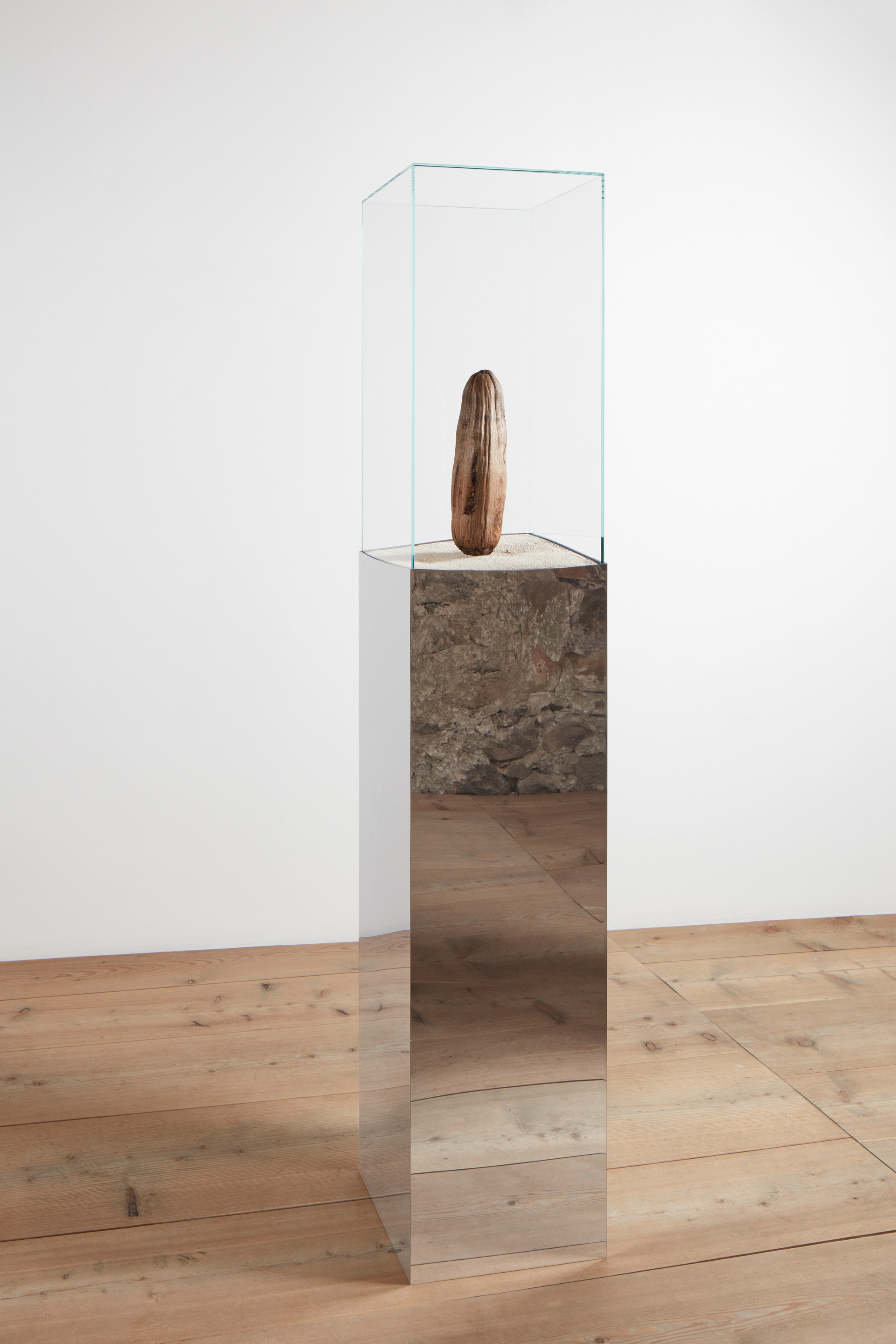
Lost at Sea – Pikini-Fragment, 2016
high pollished stainless steel, coral sand, mutated bikinian coconut, glass, 175 x 32 x 32 cm
–
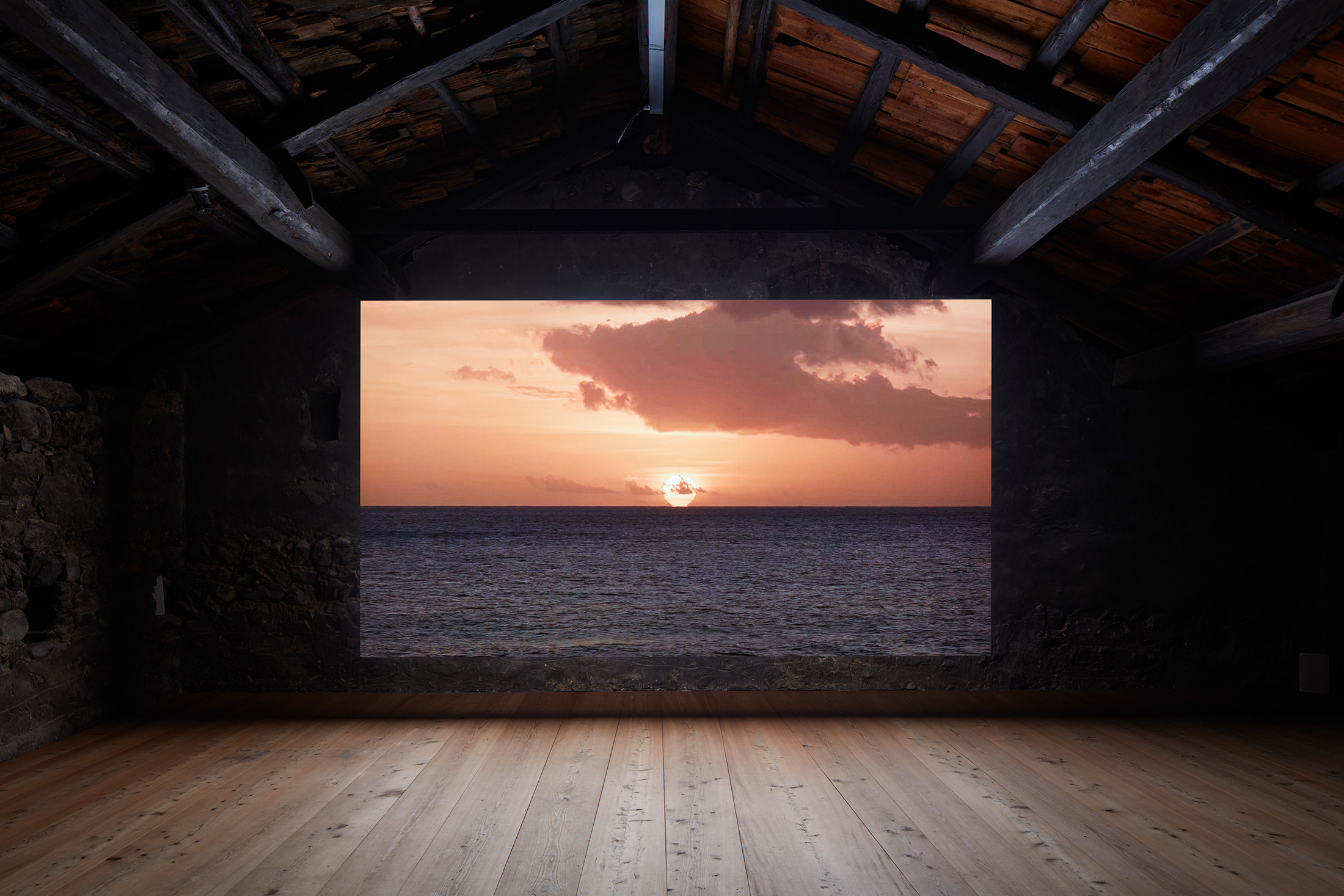
Iroojrilik, 2016
video, 24 min, Sound Edward Davenport
all images courtesy of the artist and Galerie Tschudi, Zuoz
–
Imagine the scenery: Switzerland, the fresh air, the mountains, the snow, the chalets. In this idyllic context, JULIAN CHARRIÈRE is currently presenting a new body of work that is the result from his expedition to radioactive and abandoned sites.
Entitled First Light, the presentation is featuring CHARRIÈRE‘s objects, videos and prints that are reflecting particularly upon the landscape and ecology of Bikini Atoll in the Marshall archipelago. A dramatic paradise where no less than 67 nuclear tests have been carried out from 1946 to 1958, including the explosion of the first H-bomb (1952).
During this period, bombs delivering a combined fission yield of 42.2 megatons were detonated. The force of one of these, ‘Castle Bravo’, was enough to vaporize two islands, and gouge a massive crater – measuring 2000 metres in diameter – out of the primordial reef. Another, codenamed ‘Baker’, threw a fleet of 70 captured and decommissioned WW2 battleships – some of them up to 250 metres long – up into the air. A few were ripped to shreds. Others, like the USS Saratoga and the HIJMS Nagato – storied flagships of the US and Japanese navies – eventually sank to the bottom, where their rusting hulks remain today. During this period, obliterated geology would become radioctive particles, carried on the wind to then fall on communities in neighbouring atolls. Meanwhile, the people of Bikini, who had been ‘asked’ to temporarily leave their home to make way for a series of experiments ventured ‘for the good of mankind and to end all wars’ began to learn the meaning of an exile and dispossession that continues until present. Today, the atoll’s islands bear architectural scars that stand as profane registers of this program and its unresolved consequences; a series of concrete bunkers, jutting out from the shore or hidden beneath jungle. ‘ (excerpt from the press release)
First Light by JULIAN CHARRIÈRE is on view at Galerie Tschudi, Zuoz until March 18, 2017.
–
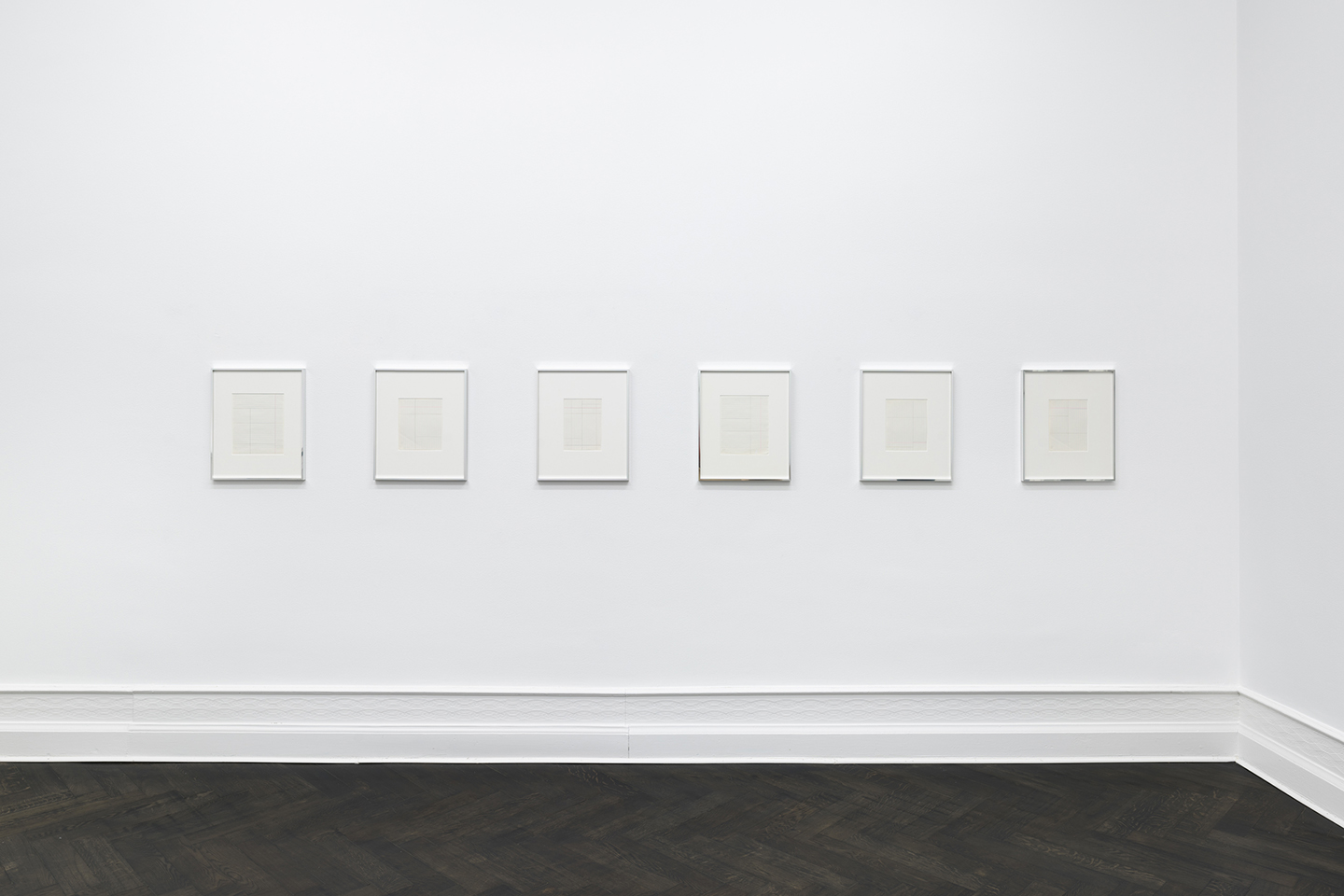
MICHAEL KREBBER, Flat Finish at Galerie Buchholz, Cologne, 2016
courtesy: Galerie Buchholz, Berlin/Cologne/New York
–
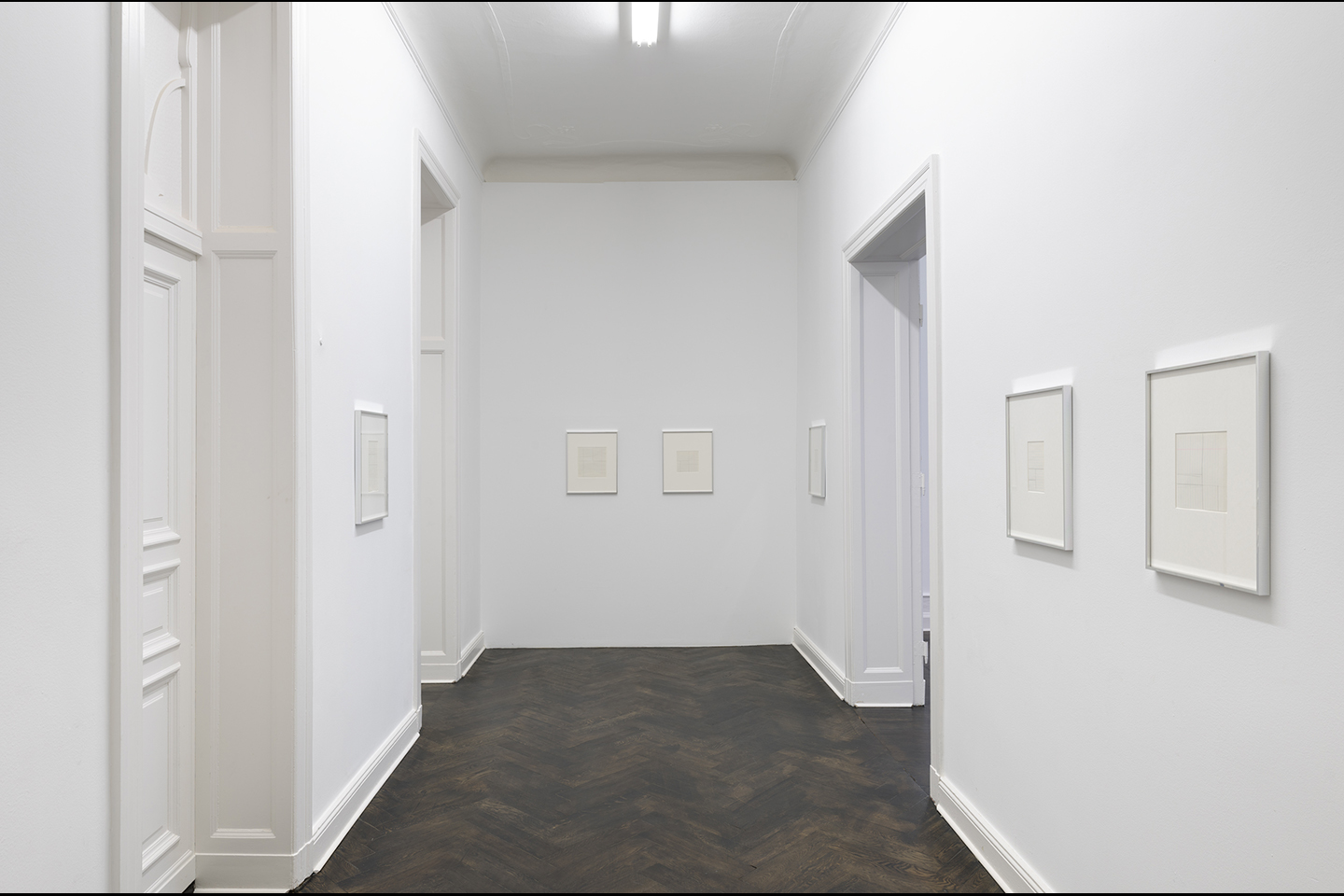
MICHAEL KREBBER, Flat Finish at Galerie Buchholz, Cologne, 2016
courtesy: Galerie Buchholz, Berlin/Cologne/New York
–
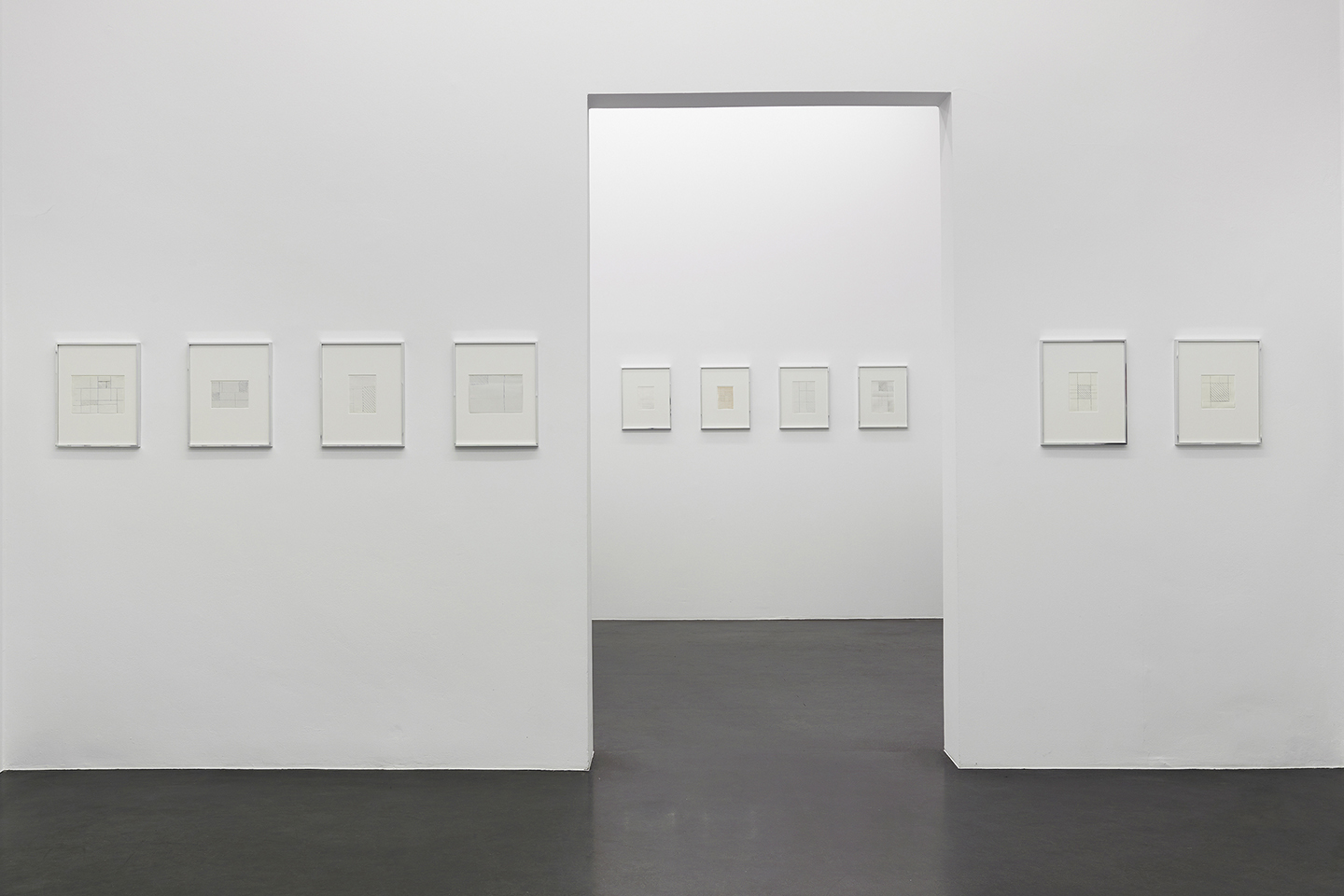
MICHAEL KREBBER, Flat Finish at Galerie Buchholz, Cologne, 2016
courtesy: Galerie Buchholz, Berlin/Cologne/New York
–
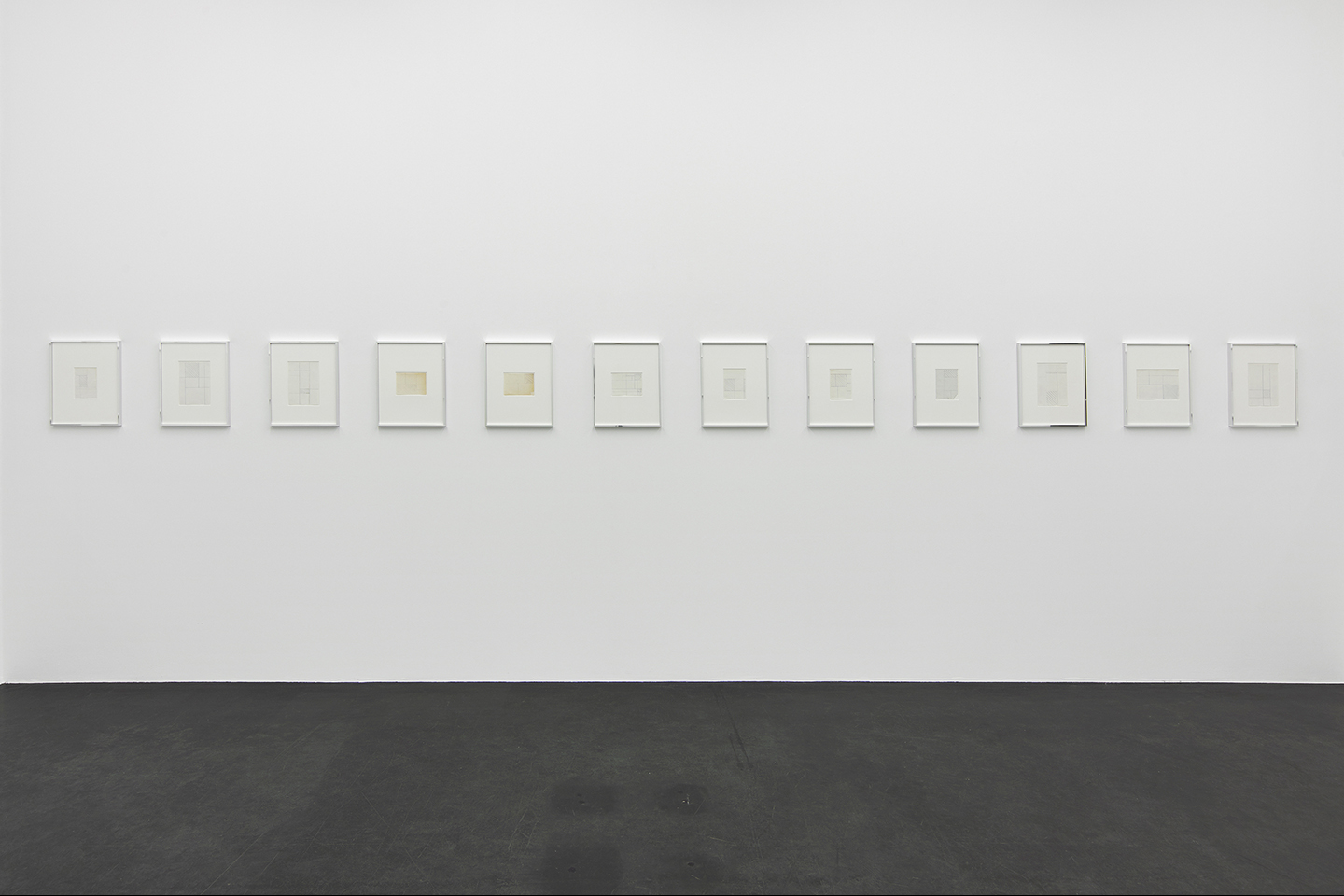
MICHAEL KREBBER, Flat Finish at Galerie Buchholz, Cologne, 2016
courtesy: Galerie Buchholz, Berlin/Cologne/New York
–
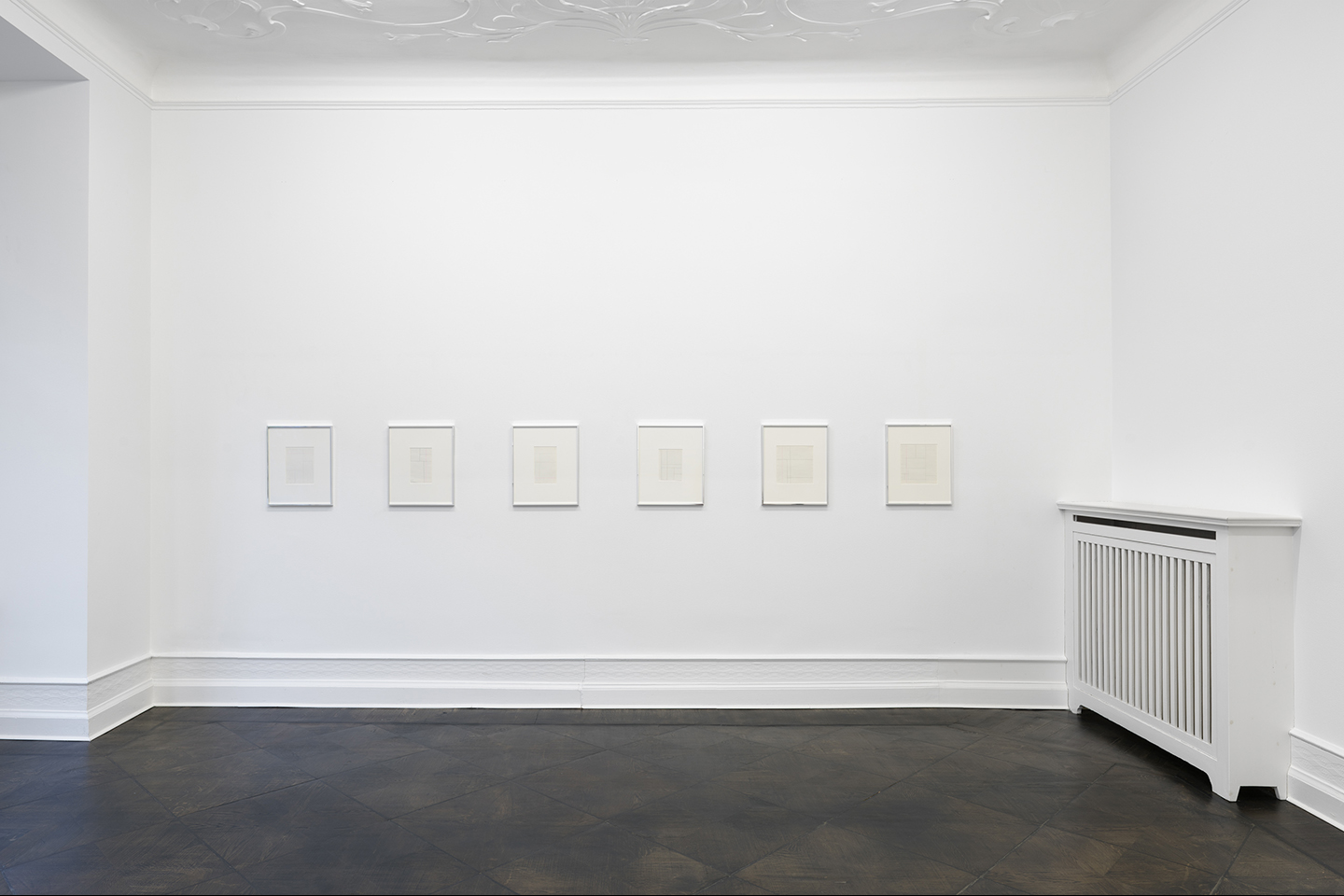
MICHAEL KREBBER, Flat Finish at Galerie Buchholz, Cologne, 2016
courtesy: Galerie Buchholz, Berlin/Cologne/New York
–
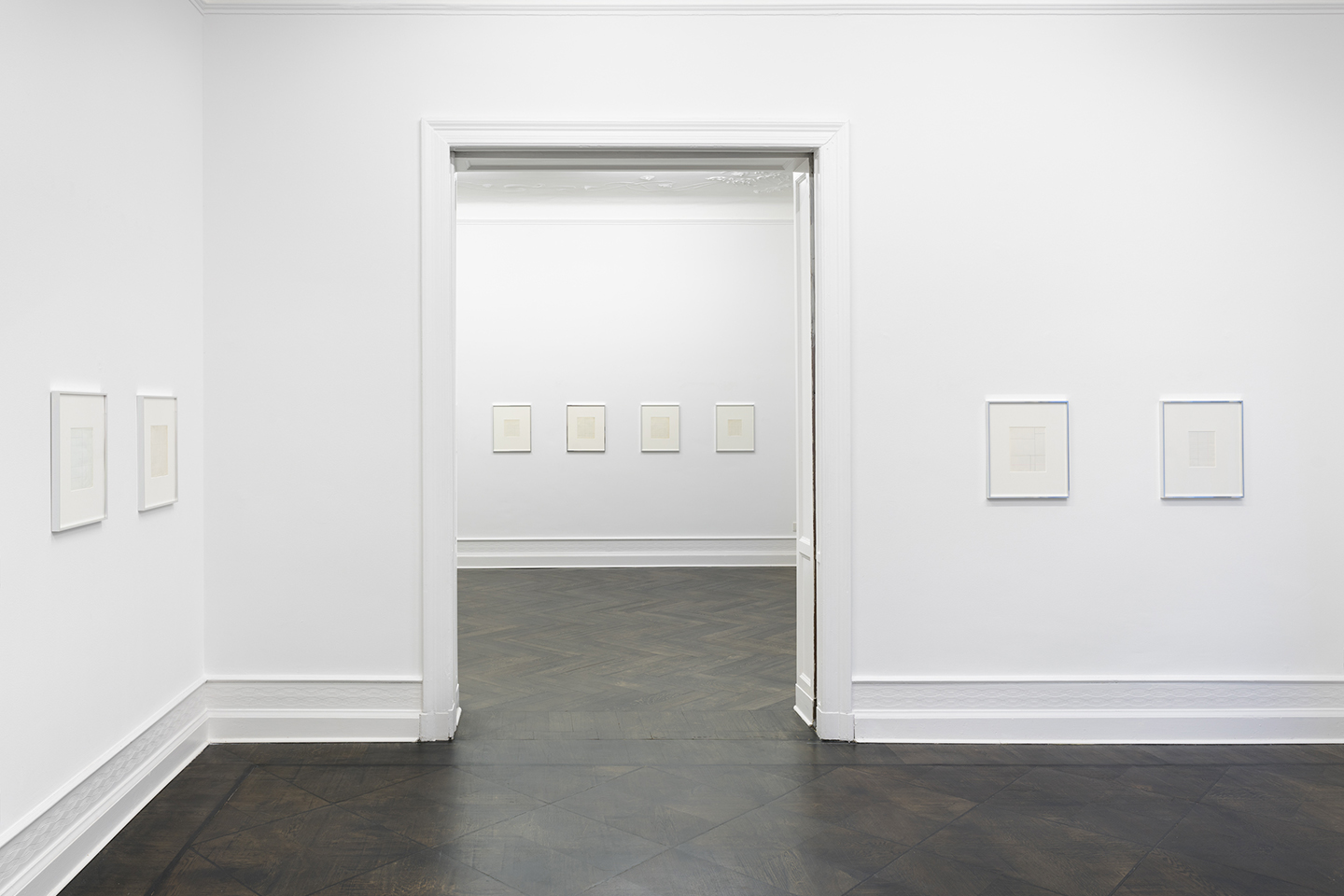
MICHAEL KREBBER, Flat Finish at Galerie Buchholz, Cologne, 2016
courtesy: Galerie Buchholz, Berlin/Cologne/New York
–
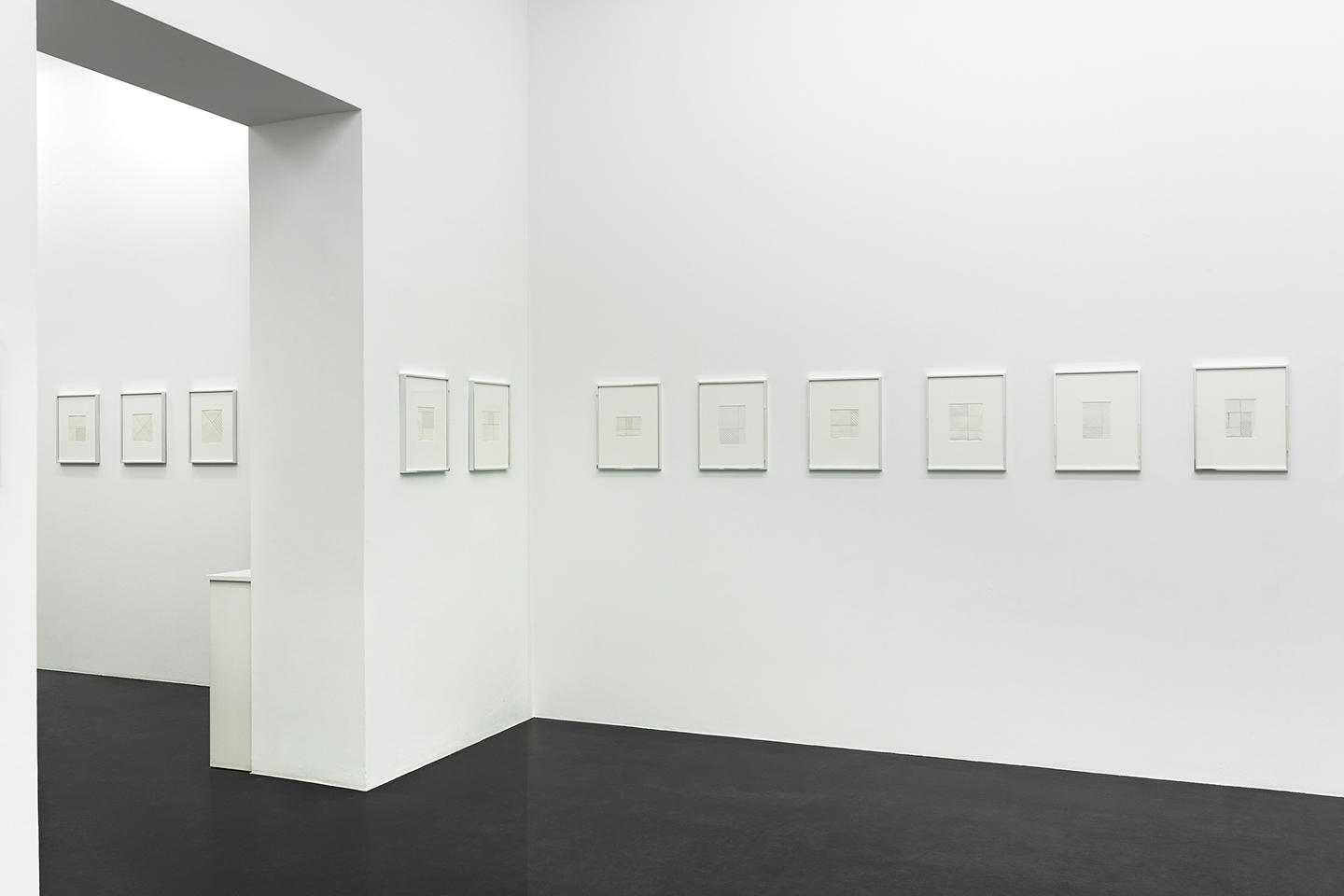
MICHAEL KREBBER, Flat Finish at Galerie Buchholz, Cologne, 2016
courtesy: Galerie Buchholz, Berlin/Cologne/New York
–
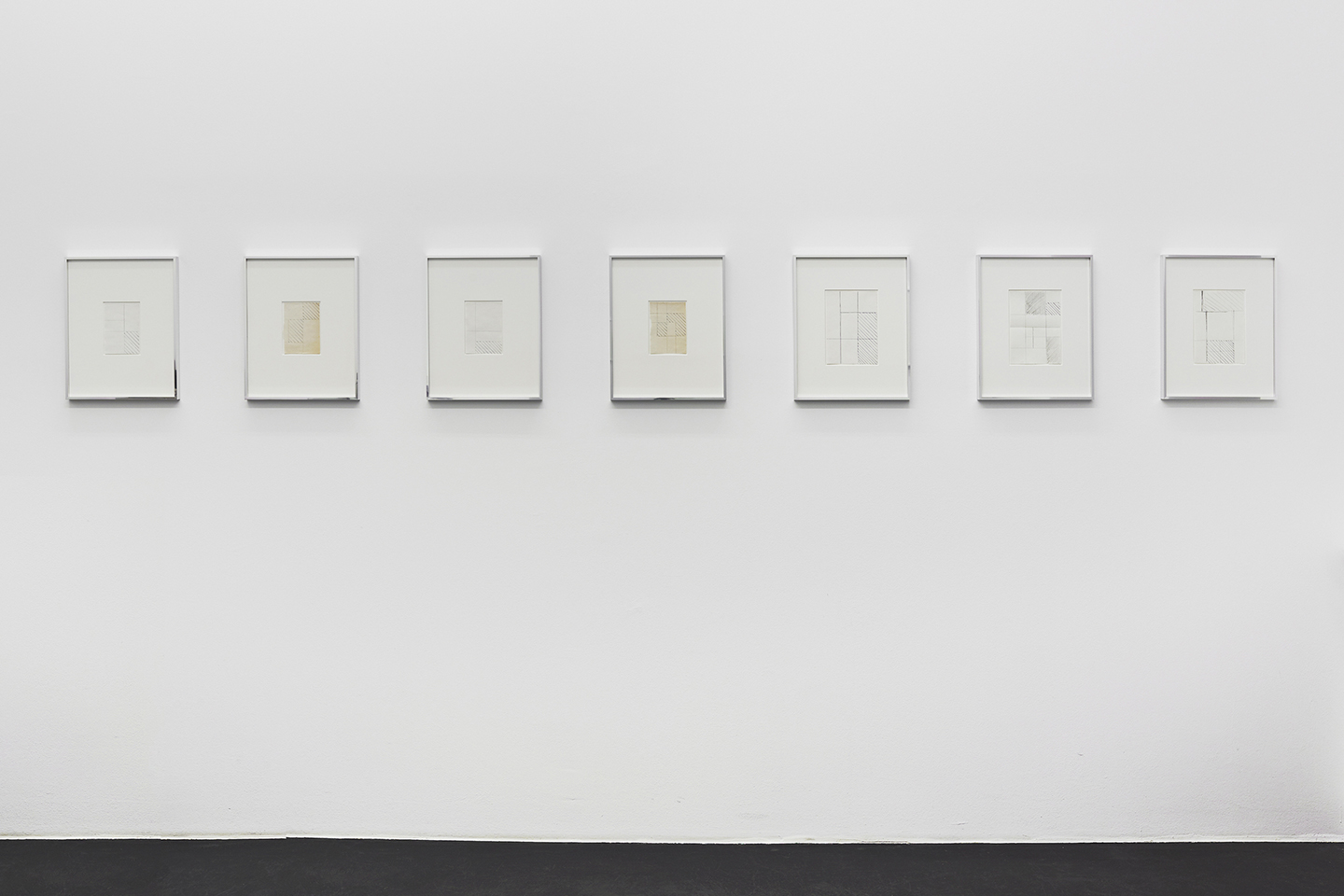
MICHAEL KREBBER, Flat Finish at Galerie Buchholz, Cologne, 2016
courtesy: Galerie Buchholz, Berlin/Cologne/New York
–
Flat Finish was the title of a solo show by MICHAEL KREBBER. The exhibition consisted in two simultaneous presentations at Galerie Buchholz in Berlin and Cologne this autumn. Both spaces featured each a series of 50 works on paper impeccably framed and exactly hung in the same way. This new body of work consists exclusively of small drawings in pencil and pen. They are minimal lines drawn by hand on ruled sheets of paper. The lines are loose and inaccurate as if the artist had failed at the simple exercise of following the printed lines as well as at the impossible task of thwarting them.
The exhibitions at Buchholz galleries are now closed. Please note that KREBBER‘s work is currently the subject of a survey show titled The Living Wedge at Museo Serralves in Porto, Portugal on view through January 15, 2017. This exhibition will travel to the Kunsthalle Bern from February 18 to April 30, 2017.
–

–
view from the exhibition And She Will Say: Hi, Ailleurs, To Higher Grounds, LAURE PROUVOST
seen at Kunstmuseum Luzern
on Wednesday, December 21, 2016
image © we find wildness
–
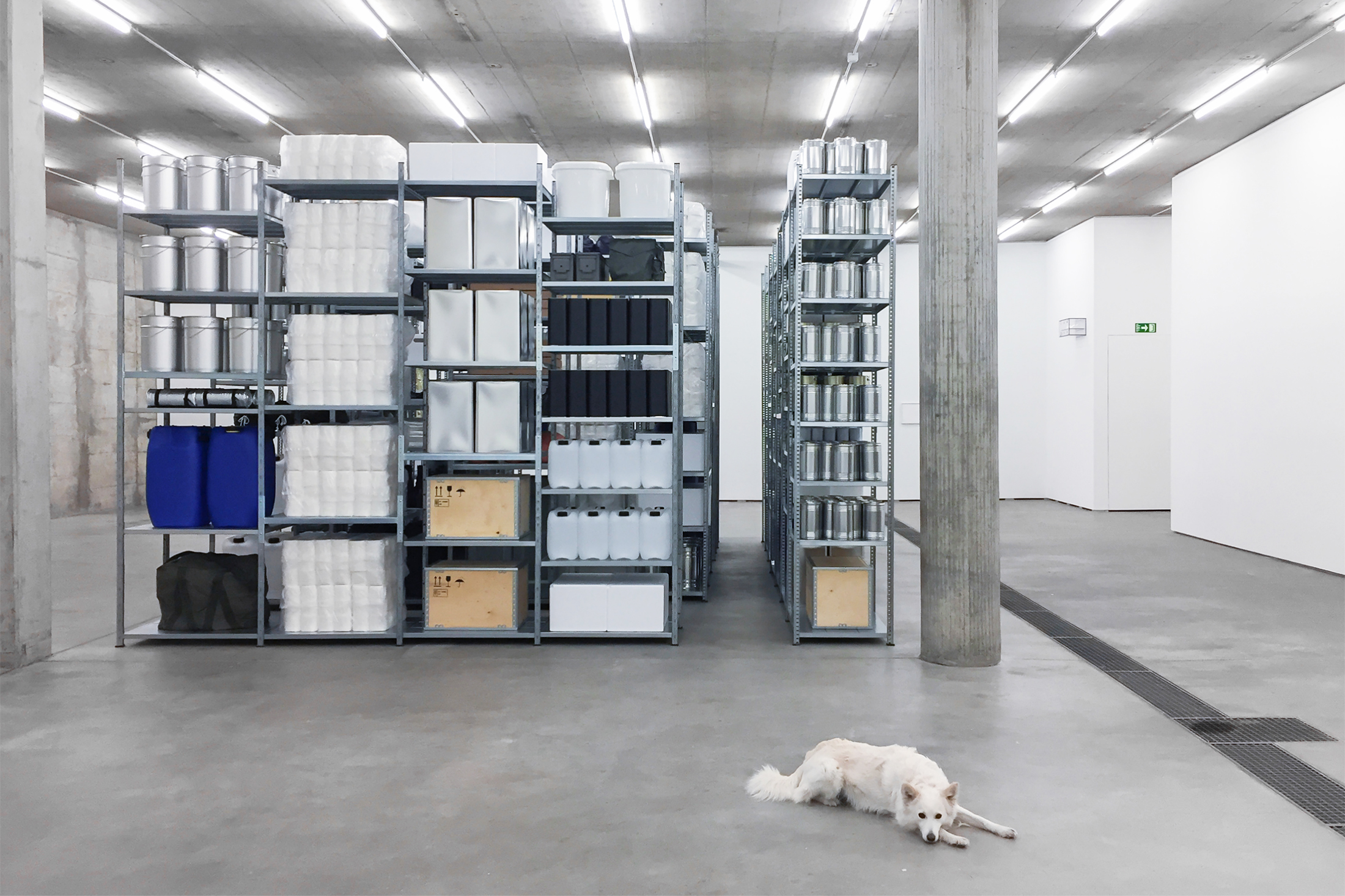
–
New Life Shelves (Basel) (2016), CLIFFORD E.BRUCKMANN
seen in the group exhibition L’Etat Parfait
at Freymond-Guth Fine Arts, Basel
on Friday, December 23, 2016
image © we find wildness
–
➝ follow we find wildness on instagram for instant content
–
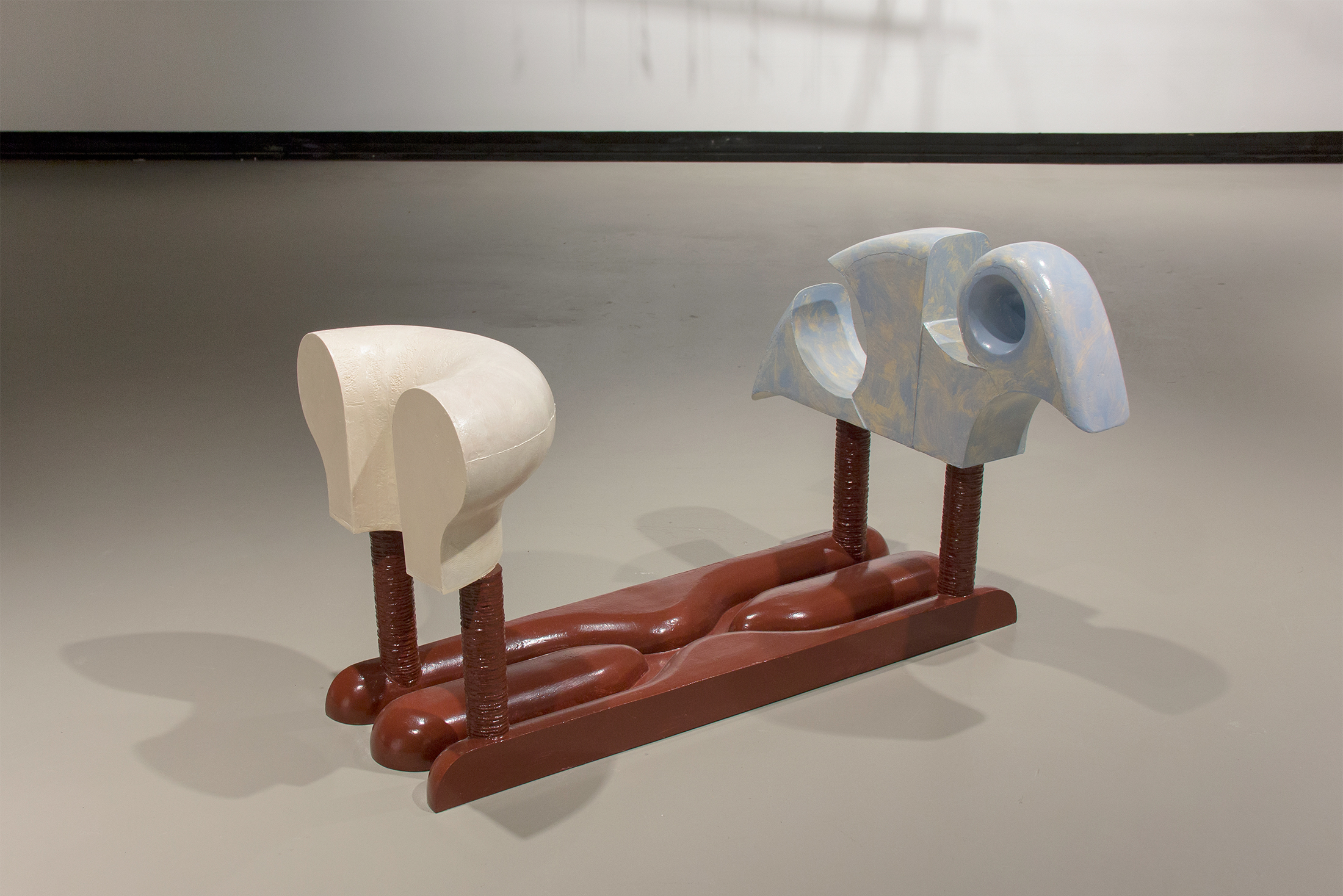
SideCar Garden, 2014
aqua resin painted, 28 x 32 x 45 in
image of the Courtesy the Artist and Clifford Gallery Colgate University, Hamilton, NY
–
Meanwhile, on yet another side of the planet, or Hamilton, New York, to be precise, a group exhibition entitled Sessile is currently presented at the art venue Clifford Gallery.
Th curator of the show, writer and artist JOSH MINKUS explained in the press release that the word Sessile refers ‘to organisms that fasten themselves to a substrate and stay there, like mussels, barnacles, or coral’. He added furthermore that ‘when observing mussels covering the rocks along a shoreline, we know the water was there and will return soon. The mussels, by staying put, articulate a boundary, and the indeterminacy of what can be called separate as land and sea’.
Basically the exhibition aims to underscore how the sculptures relate to the context they’re shown and to the base to which they’re attached.
Sessile with GIULIA CENCI, RAND HARDY, EVA LÖFDAHL, K.R.M. MOONEY, NICK RAFFEL is on view at Clifford Gallery (Colgate University) in Hamilton until February 15, 2017.
–
all images courtesy the artist and Nogueras Blanchard, Madrid
–
Solo, a solo exhibition by RUBÉN GRILO
on view at Nogueras Blanchard in Madrid
until January 14, 2017
–
chosen by curator and editor DOMENICO DE CHIRICO
–